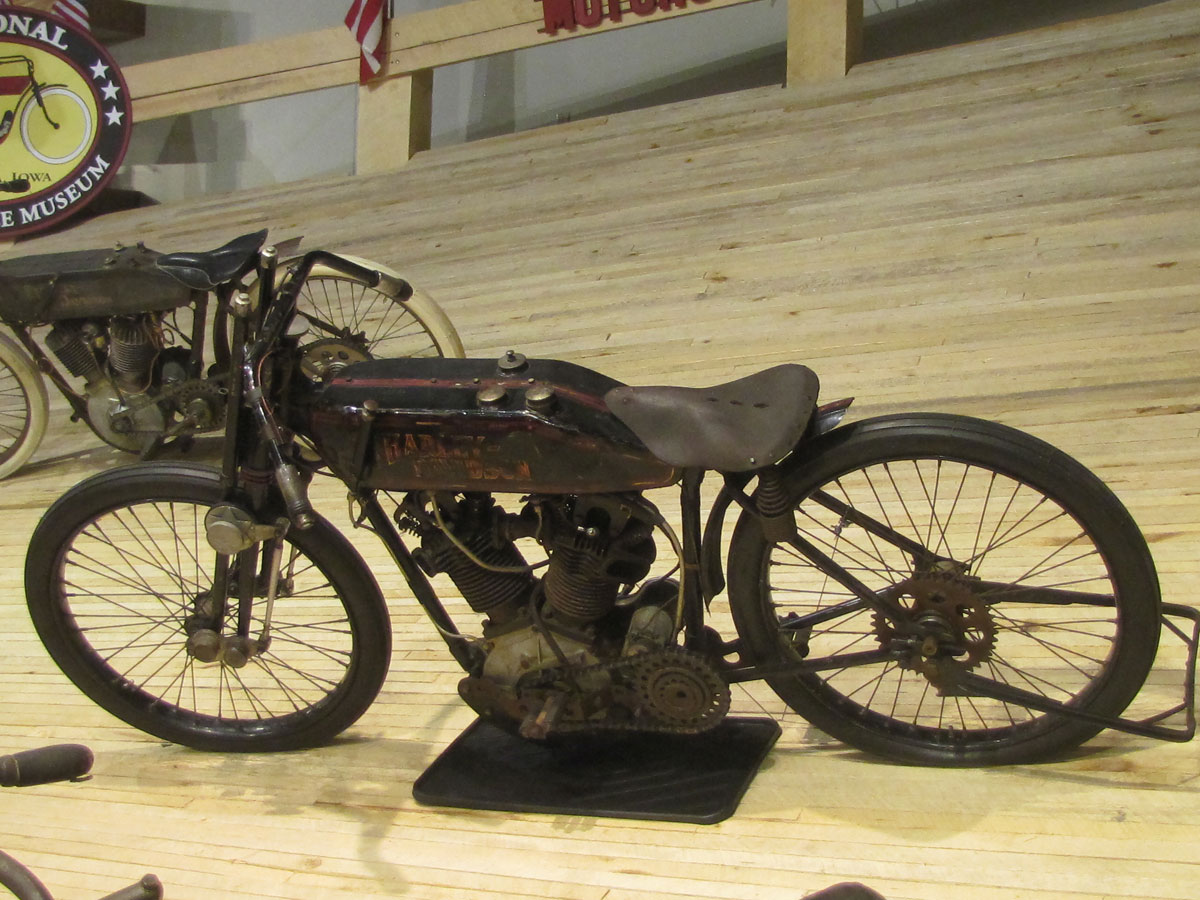
This board track racer from the end of the era makes use of Harley’s best street engine’s “Two-Cam” bottom end, but used better breathing overhead valve racing cylinder heads and a racing chassis. With Harley’s actual production racers carrying a high price tag and being tricky to maintain, the production-based machine was a good alternative.
The engine in a higher state of tune, a “production racer” of sorts, the H in JDH signals high performance. With the “two cam” set up the JDH bottom end served well as a basis for racing as well. Note there is no exhaust system; two exhaust ports in each head expel exhaust unrestricted. In this era the value of exhaust “back pressure” was not understood. This machine shows a complete racing chassis with a highly developed racing fork. A sophisticated friction damper setup is attached to the lower link, along with grease cups on the pivot points on the lower link.
Board track and dirt track racing called for direct drive, no clutch or transmission. Racing starts involved push or pull starting the race bikes on the track, the officials getting riders to bunch up on a sighting lap, a rolling start. When the bikes were in a tight pack the starter dropped the green flag and racing was on.
While overhead valve setups on street bikes came first with Harley’s singles about 1926, many of their racing V-Twins used more effective overhead valve setups, two and four valves per cylinder, much earlier. Note the steel trusses that support the rocker arms driven by typical pushrods from inside the cam chest. The big twin 61 cubic inch street bikes received the overhead valve design in 1936 with the EL “Knucklehead.”
On loan to the National Motorcycle Museum from the Jill & John Parham Collection, this is the sort of race bike that makes a visit to the National Motorcycle Museum fun, but also educational. The linked fork damper and these special cylinder heads are not something you come across very often. The Board Track display at the Museum has many interesting and rare machines. You can learn more about the history of Board Track racing, also known as Motordrome racing, in Don Emde’s great new book, SPEED KINGS, available in the Museum store. Click here to view the book.
Specifications:
-
- Engine: Overhead Valve 45 Degree V-Twin
- Bore & Stroke: 3.31 x 3.5 Inches
- Displacement: 61 Cubic Inches /1000 cc’s
- Carburetion: Schebler
- Ignition: Magneto
- Horsepower: 22HP, Estimated
- Primary: Chain Driven
- Clutch: Direct Drive
- Transmission: Single Speed, Direct Drive
- Final Drive: Chain
- Frame: Steel, Single Loop
- Suspension: Damped Sprung Fork / Rigid, Sprung Seat
- Wheels / Tires – 3.00 x 28 / 3.00 x 28 Inches
- Brakes: None
- Wheelbase: 54.5 Inches
Leave a Reply
Want to join the discussion?Feel free to contribute!

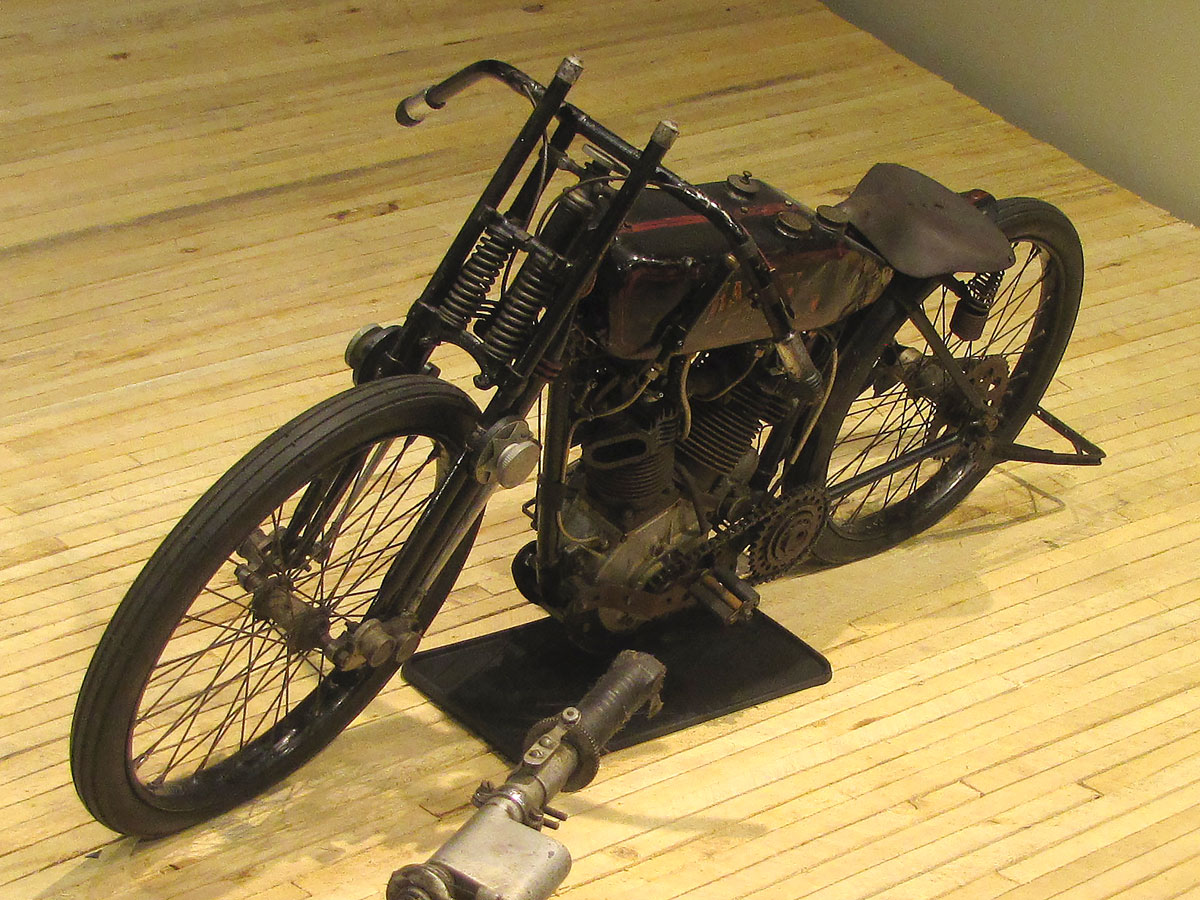
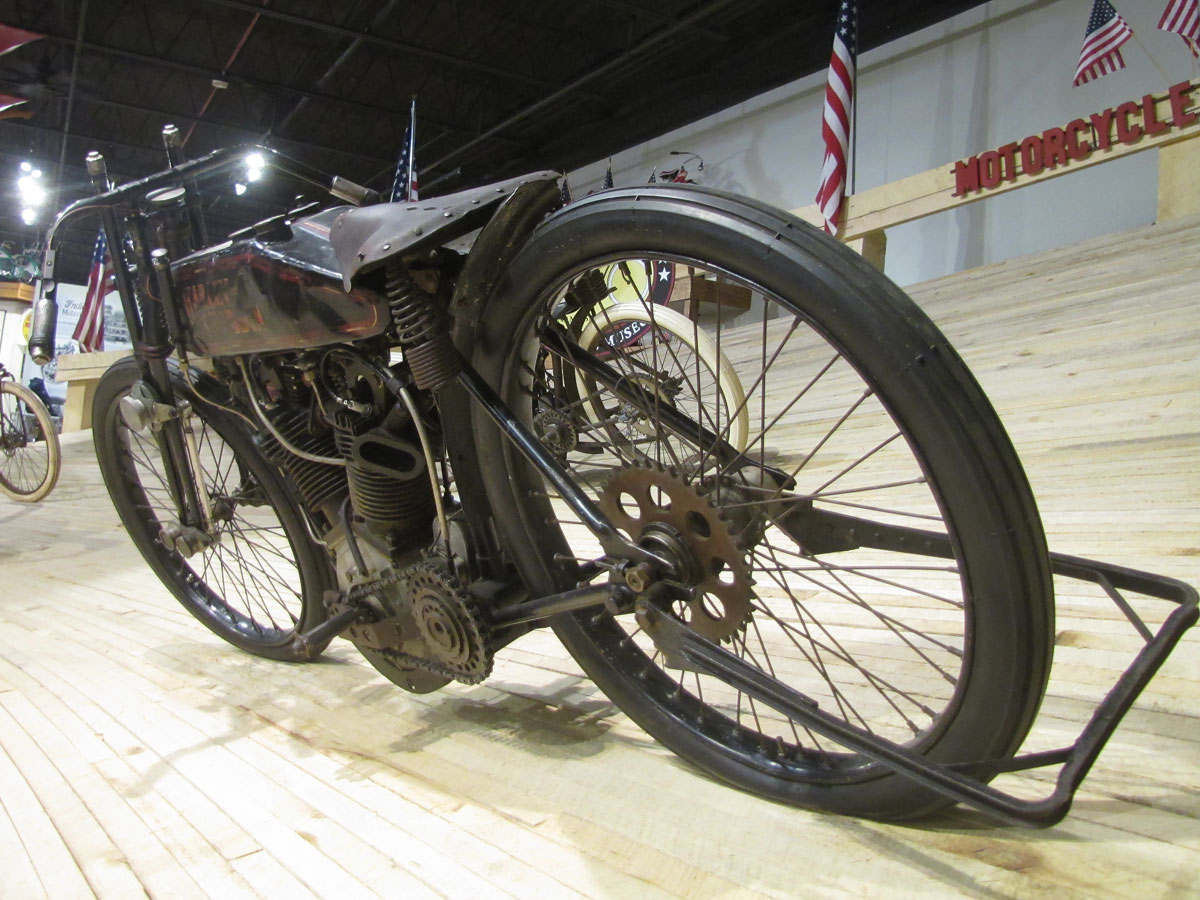
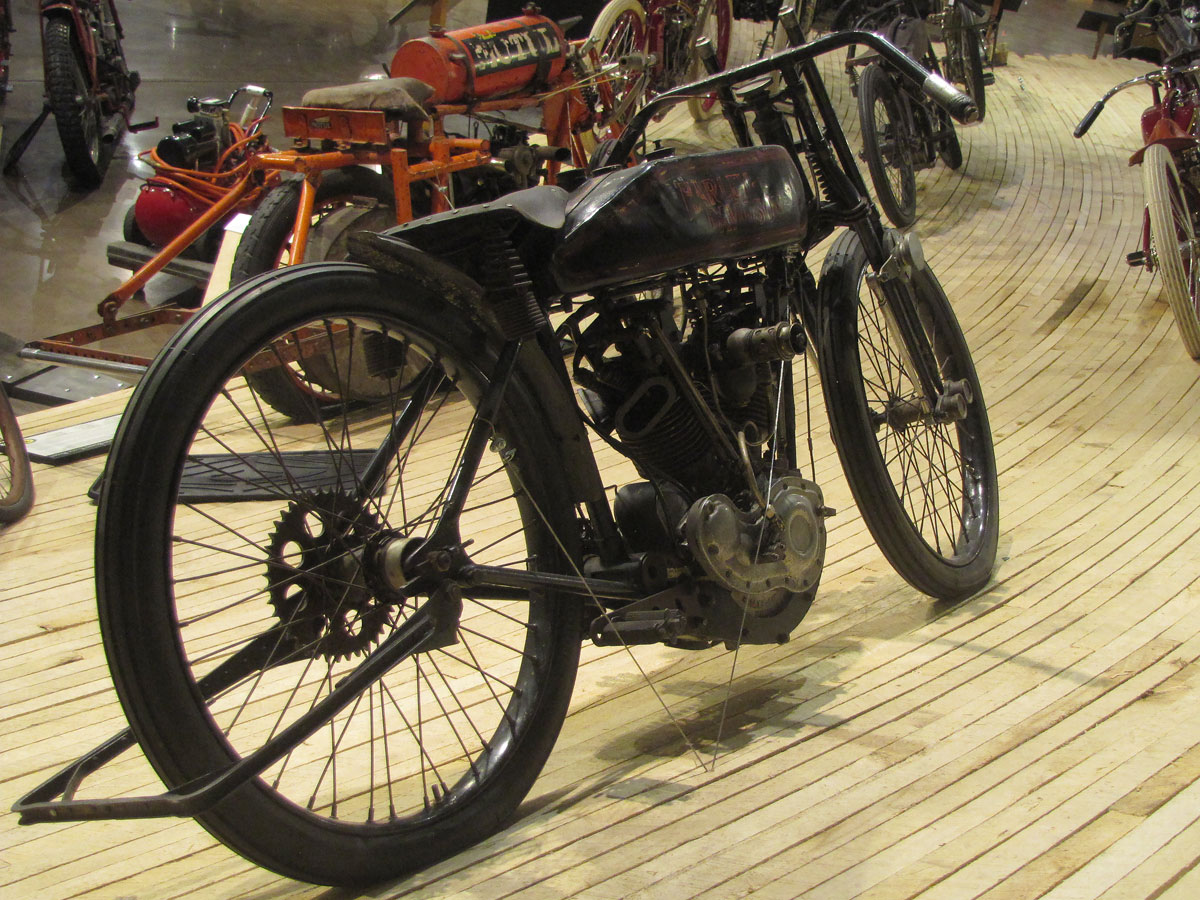

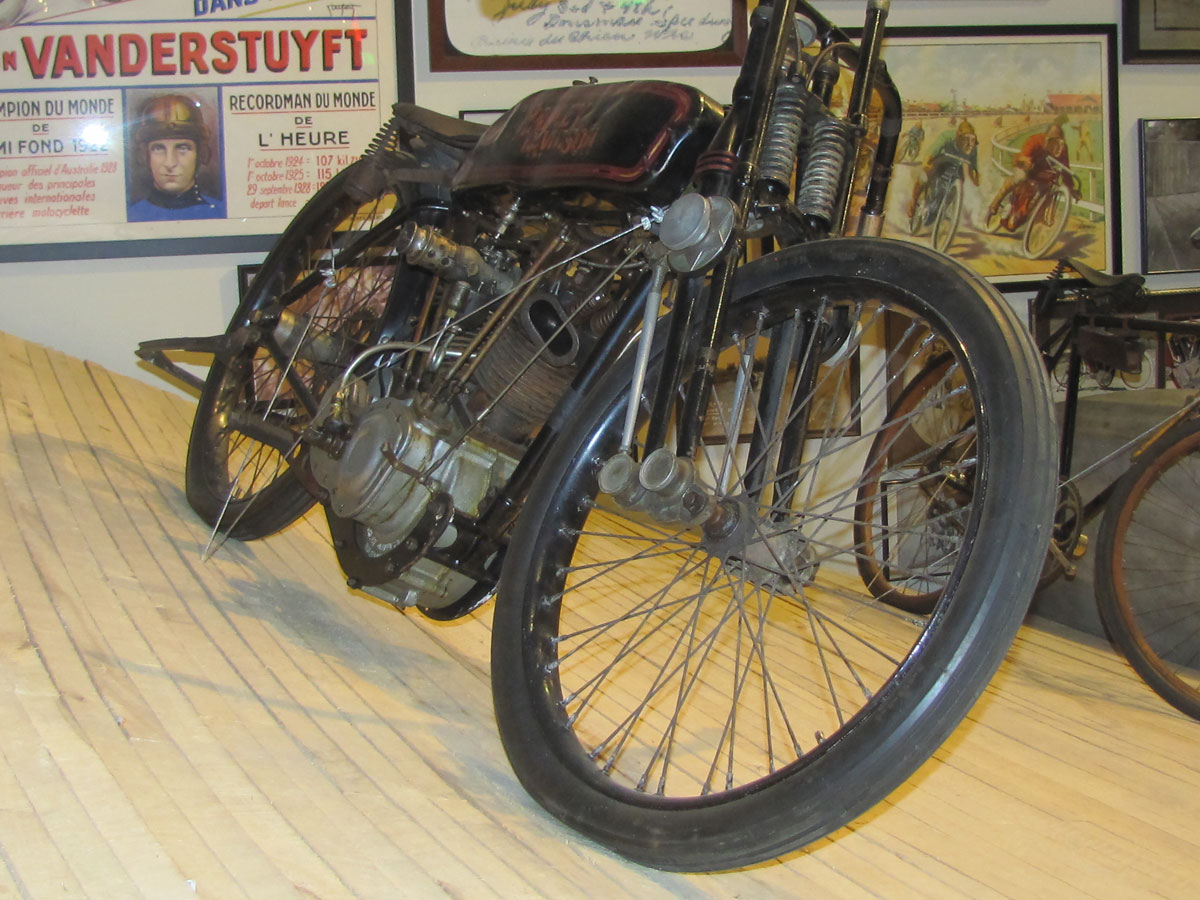
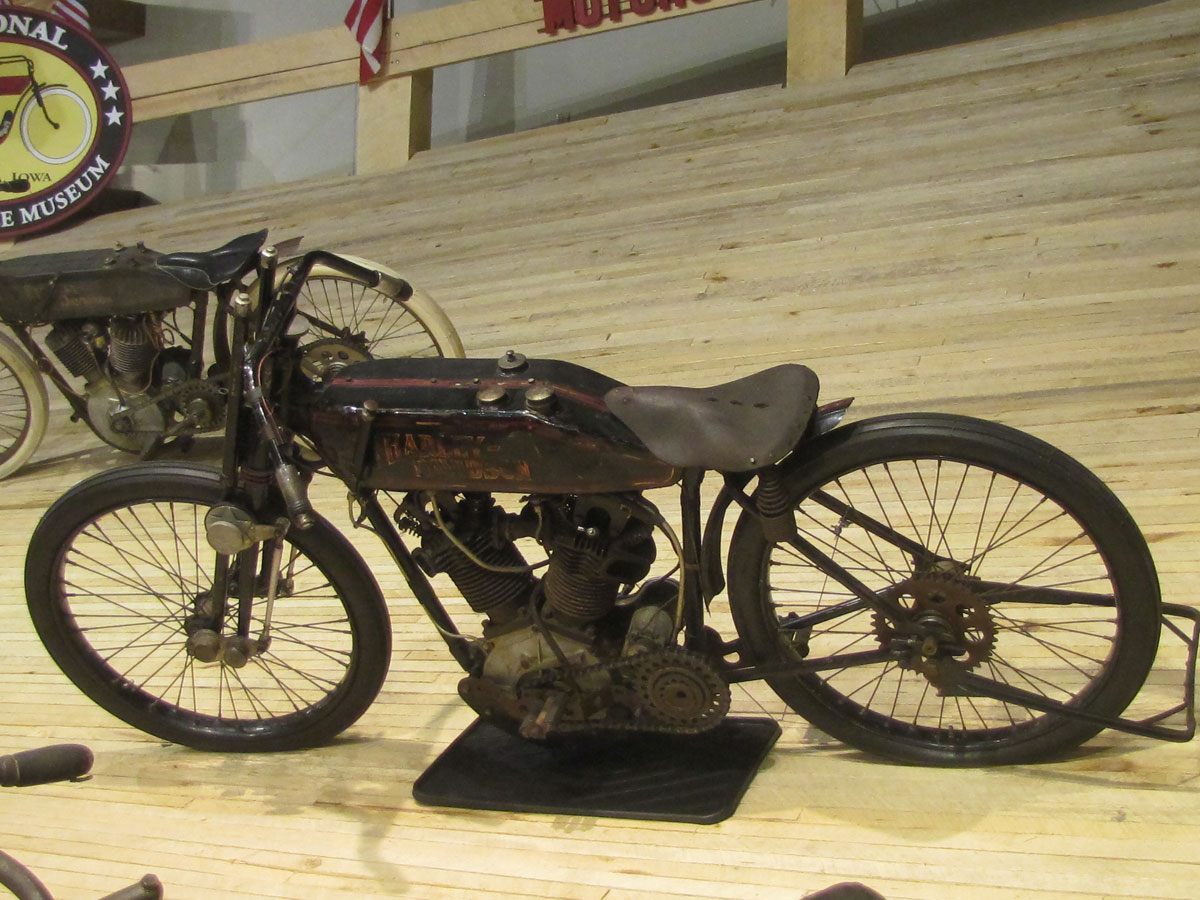
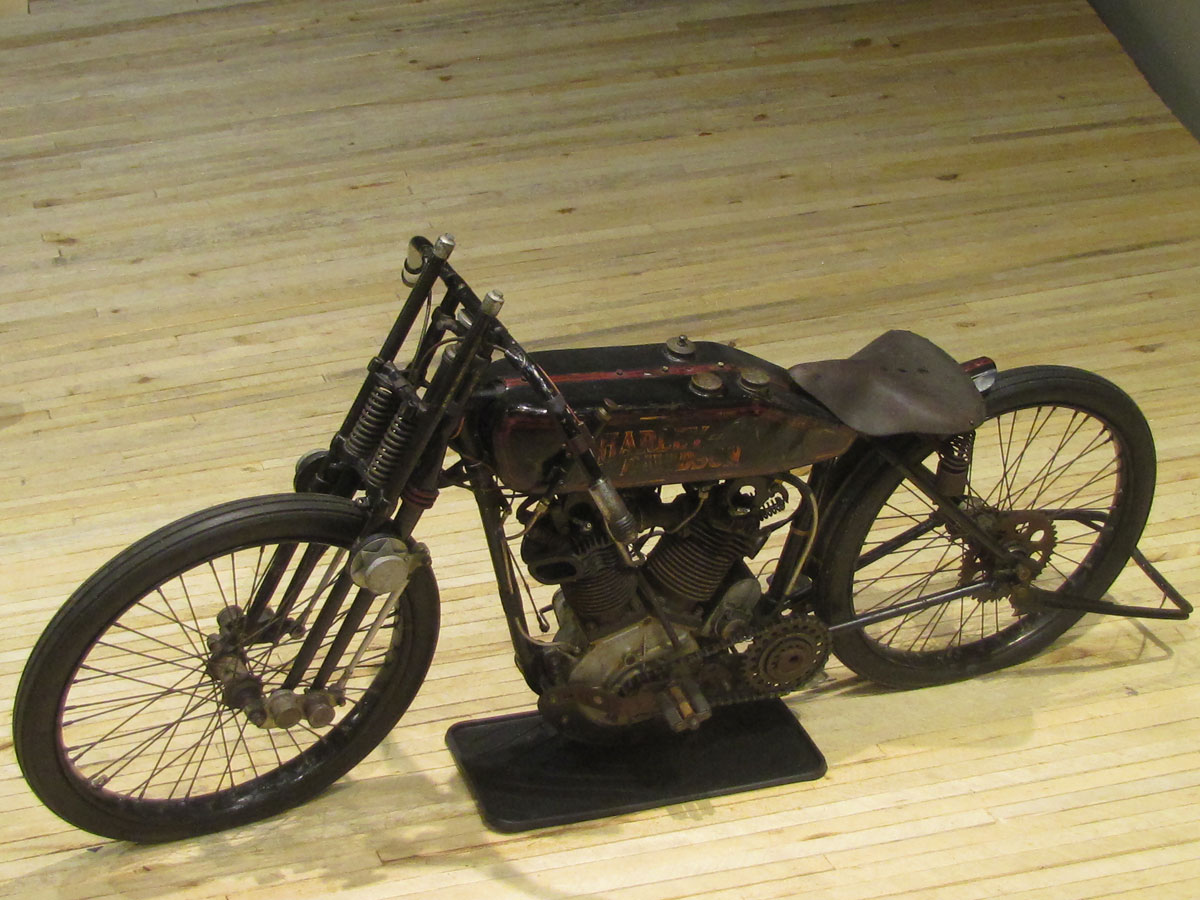
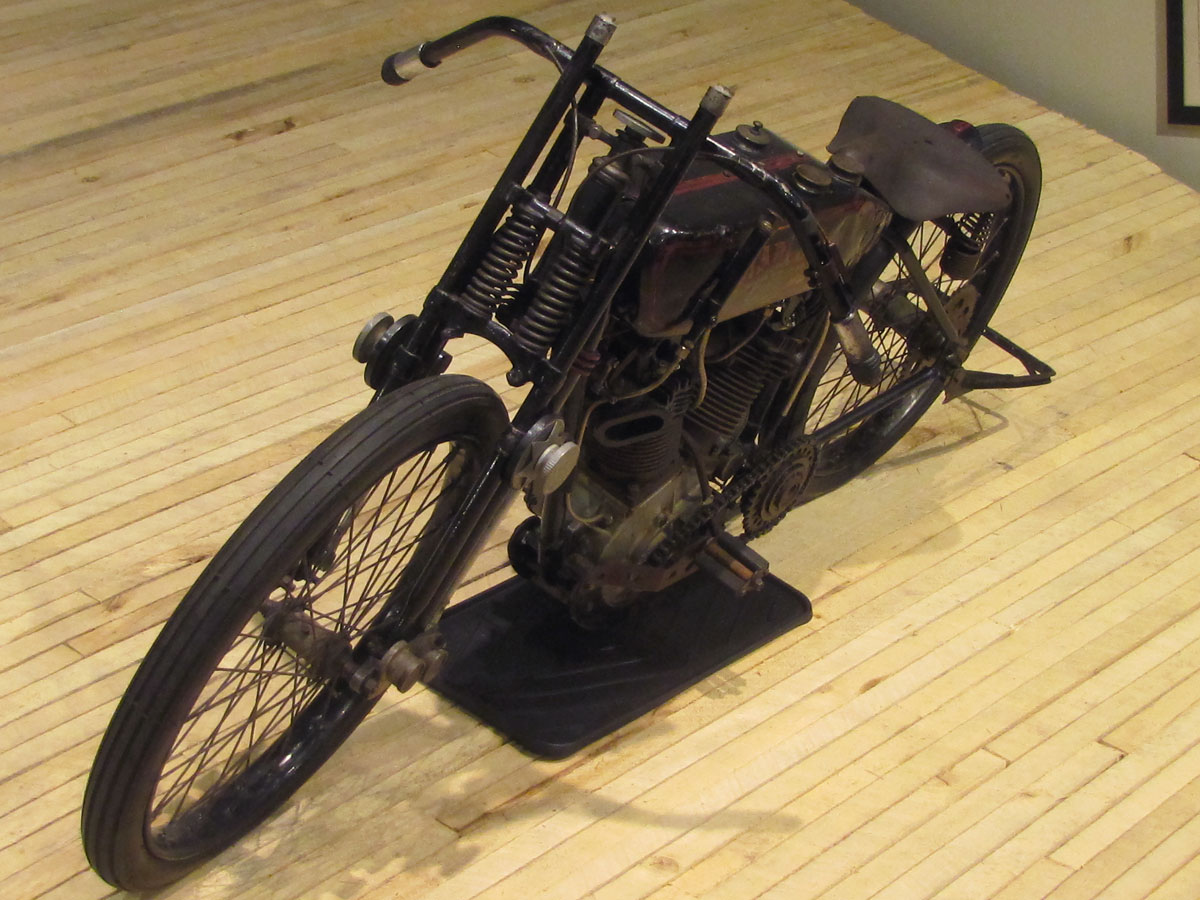
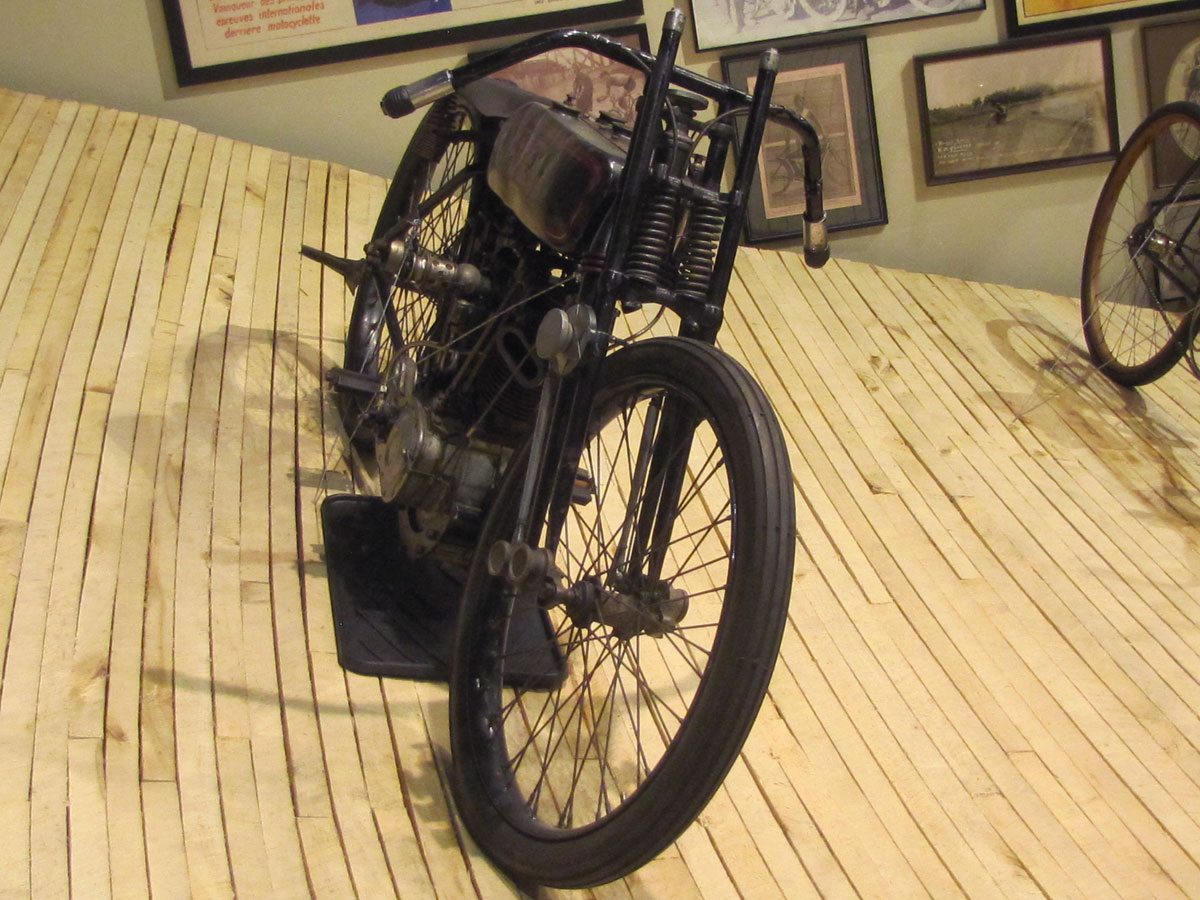
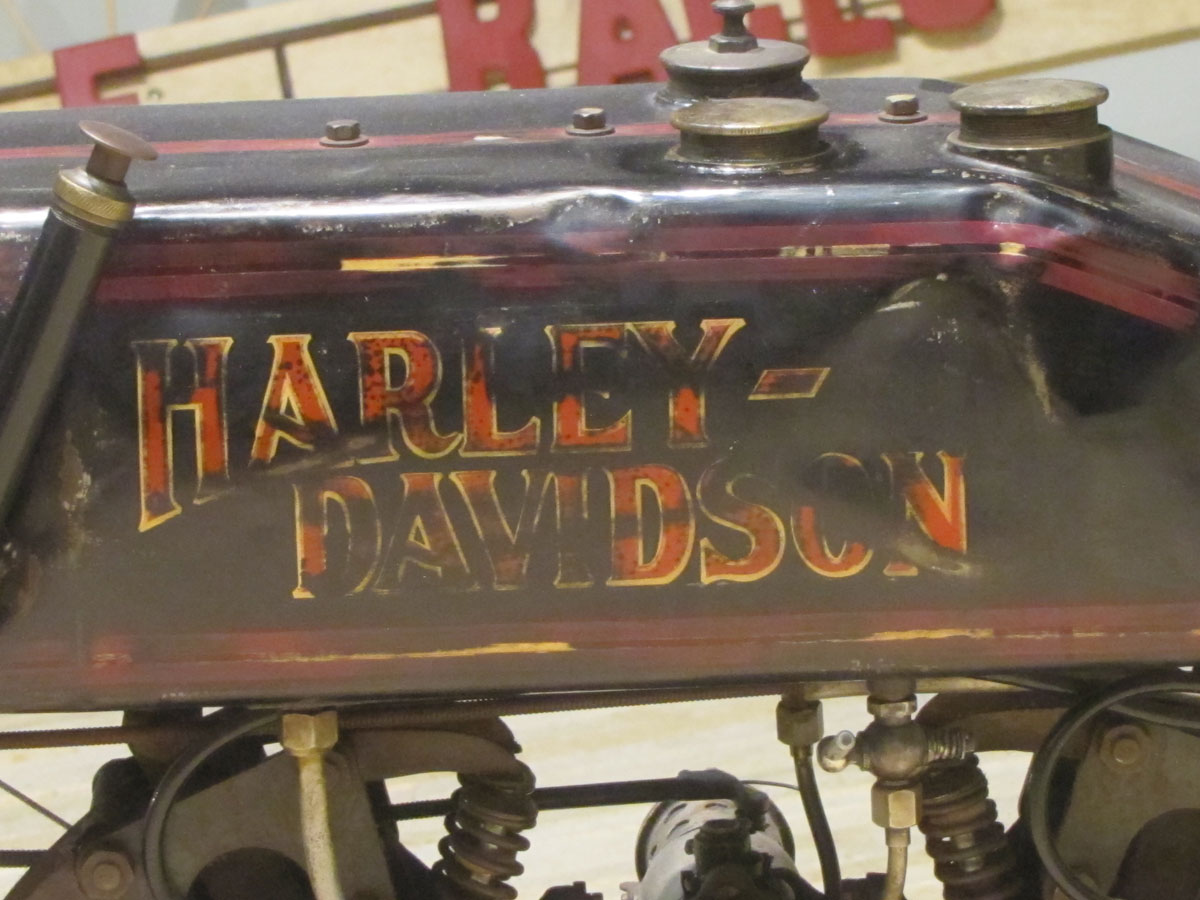
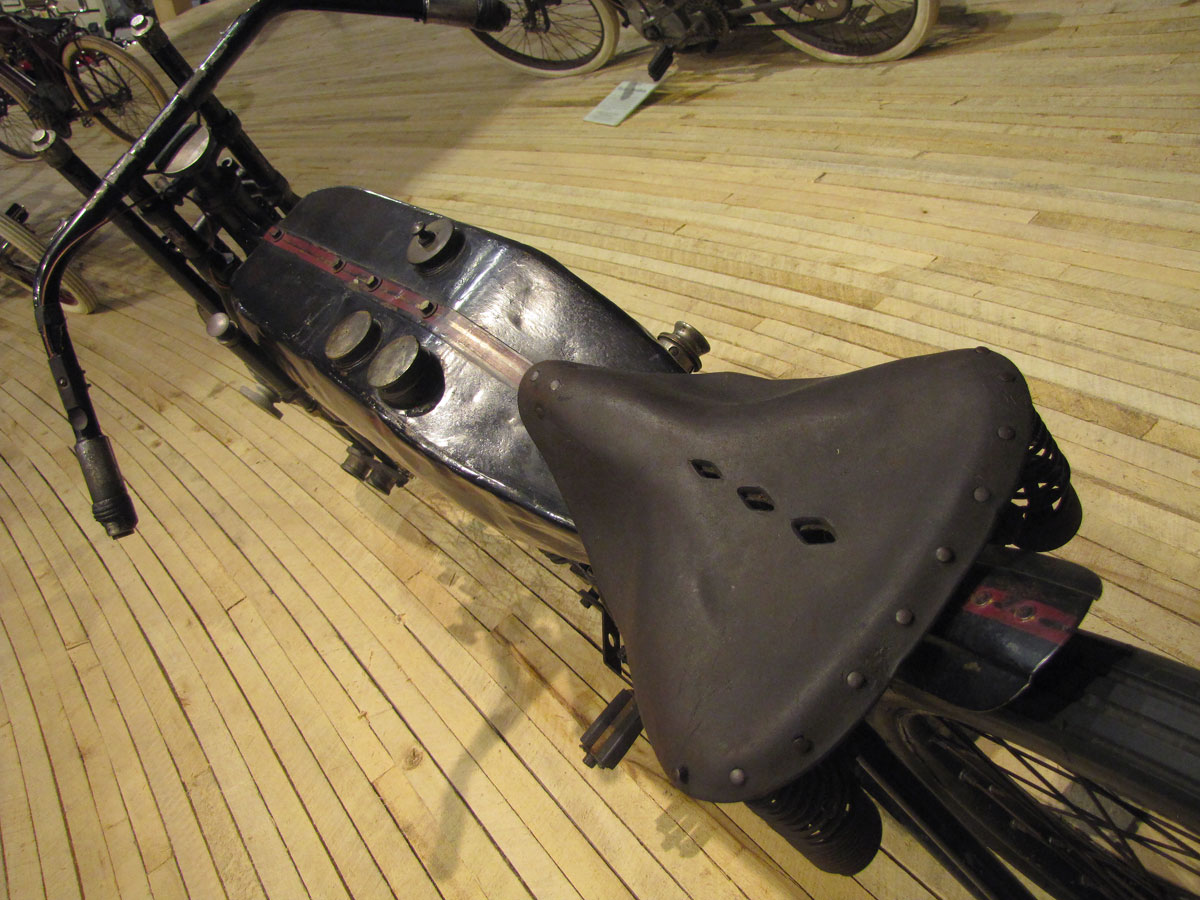
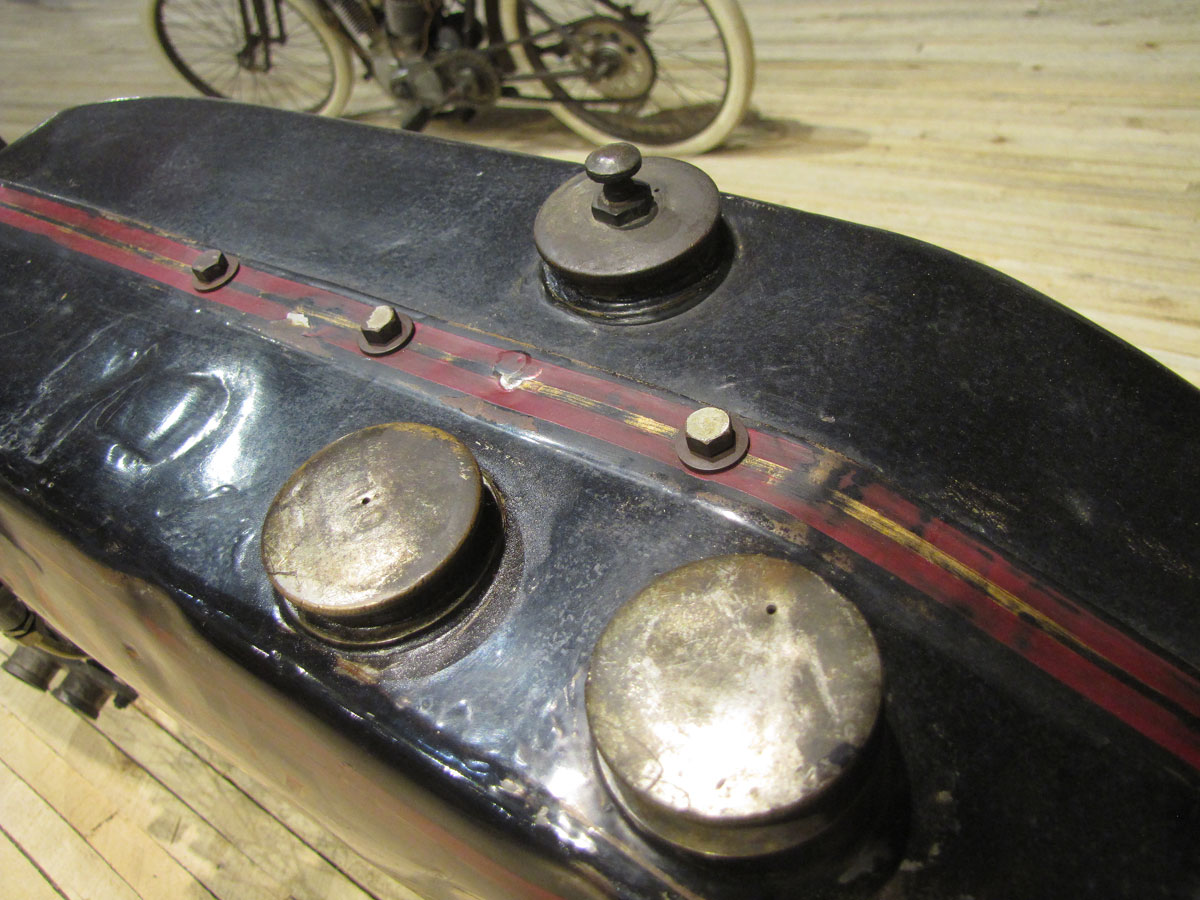
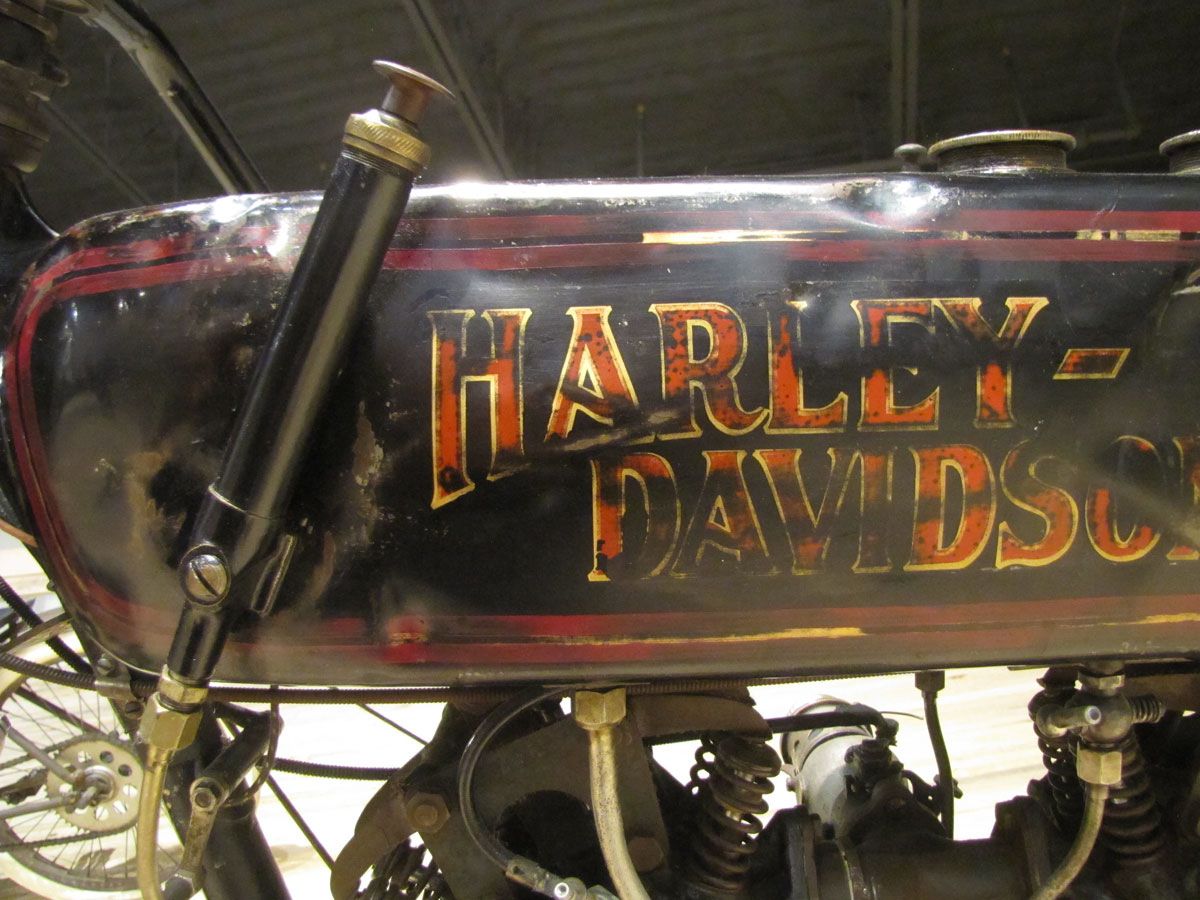
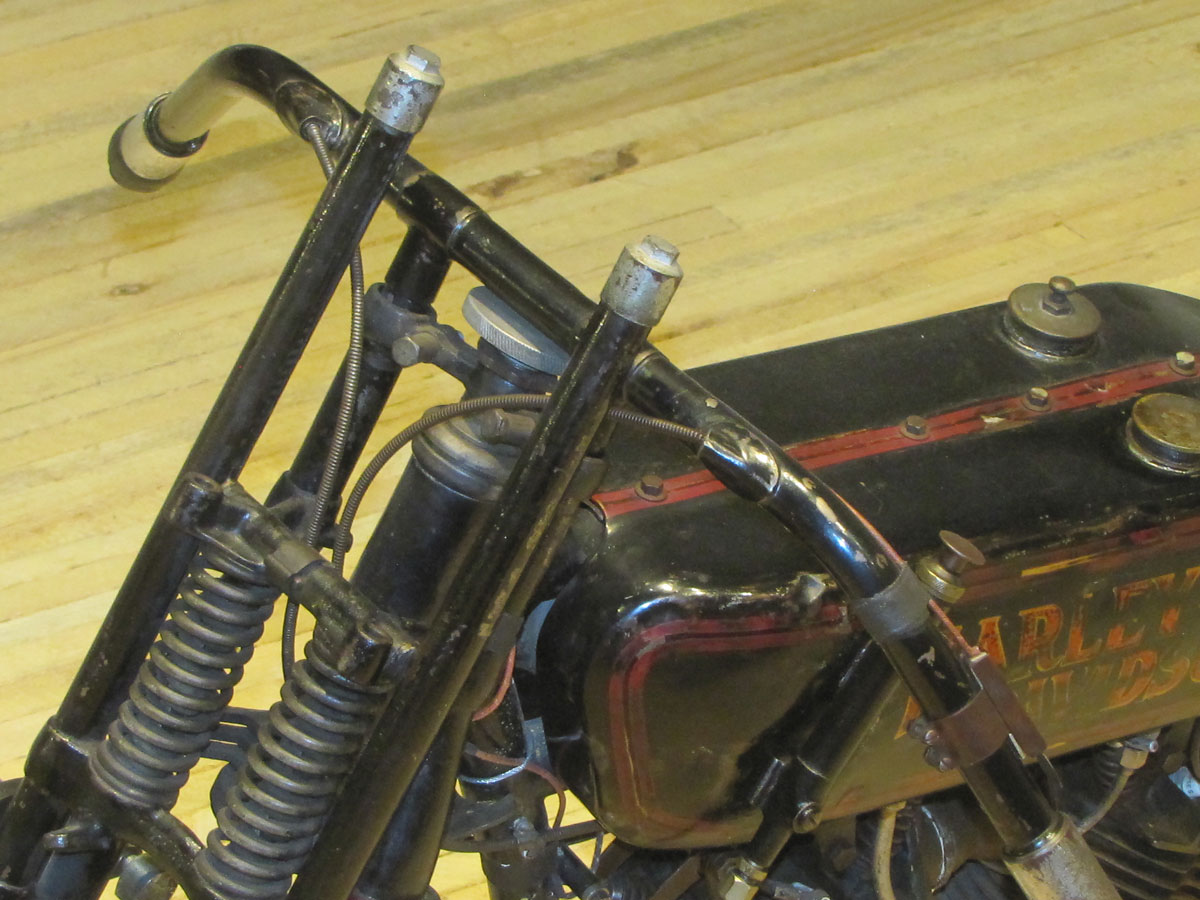
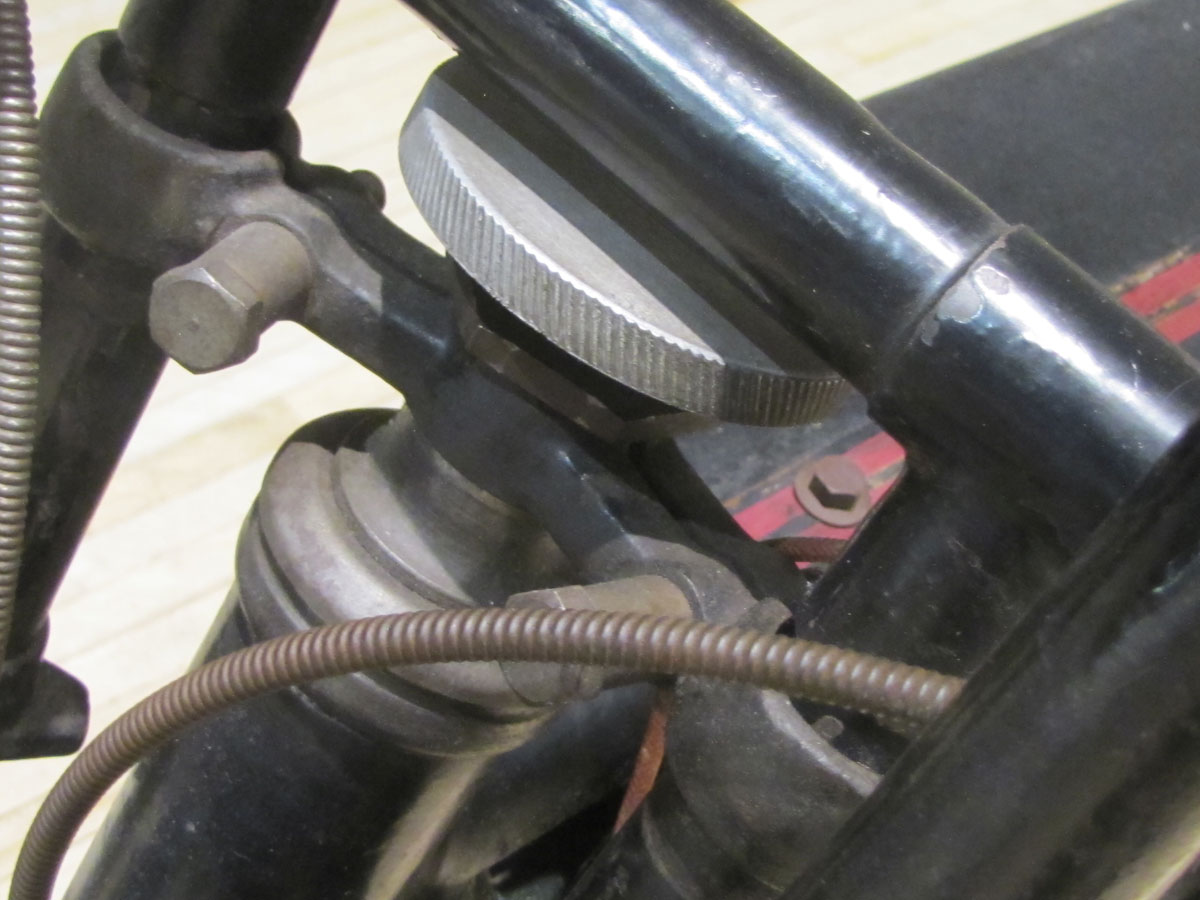
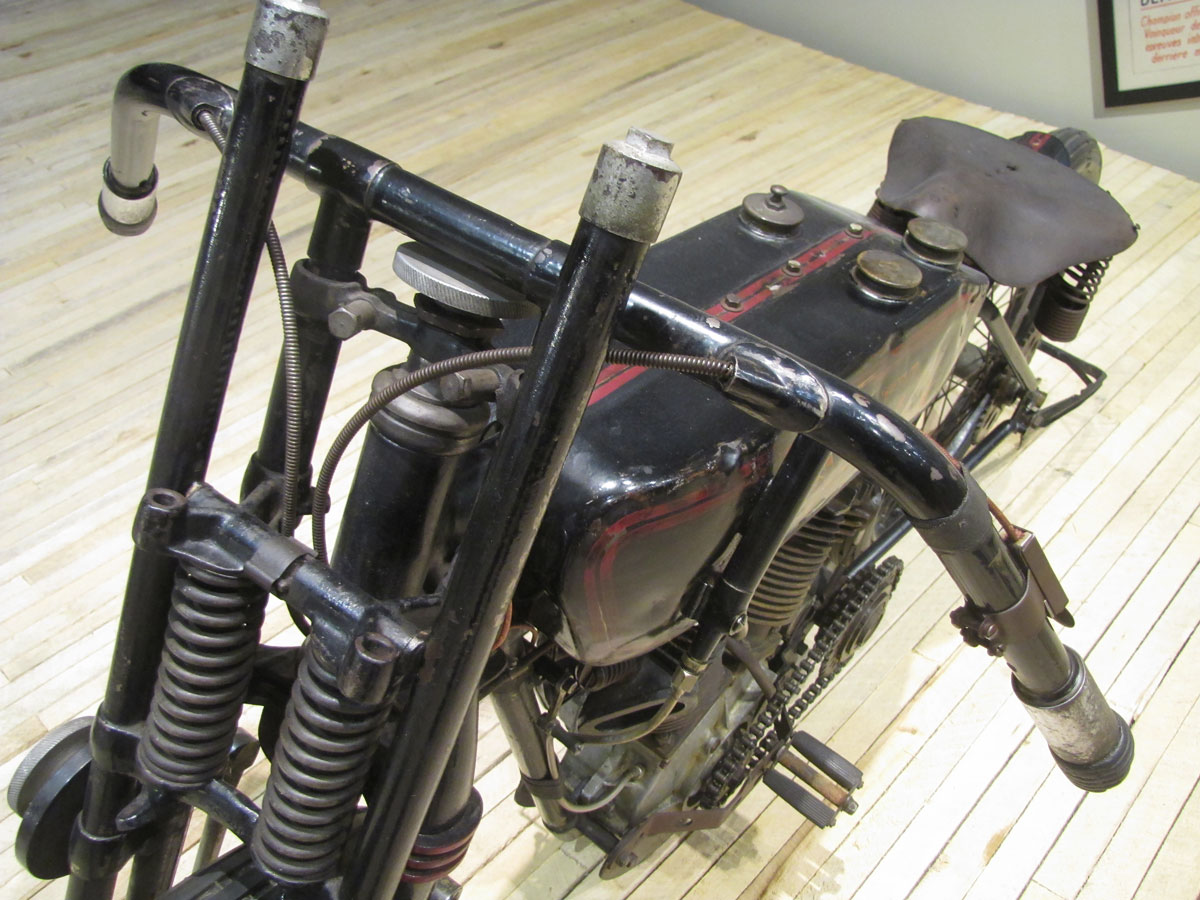
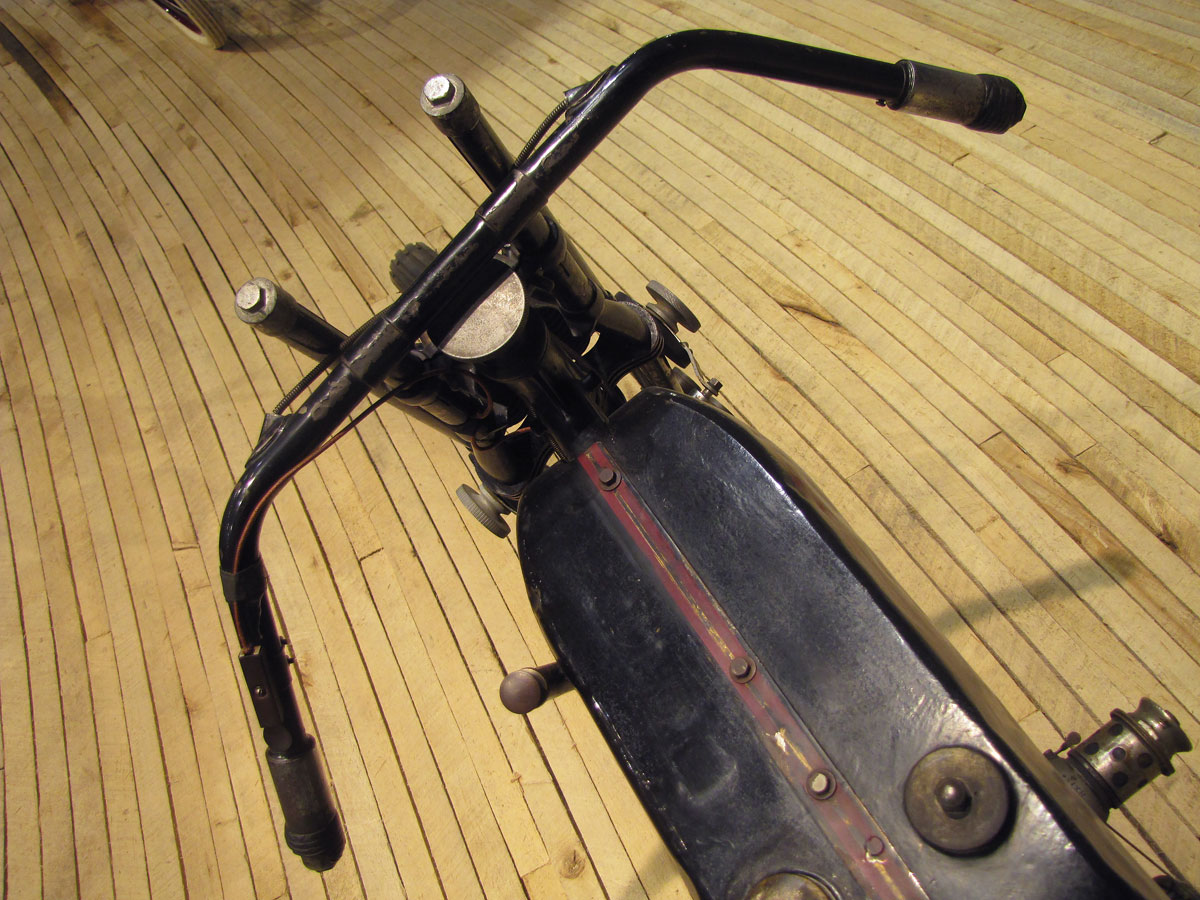
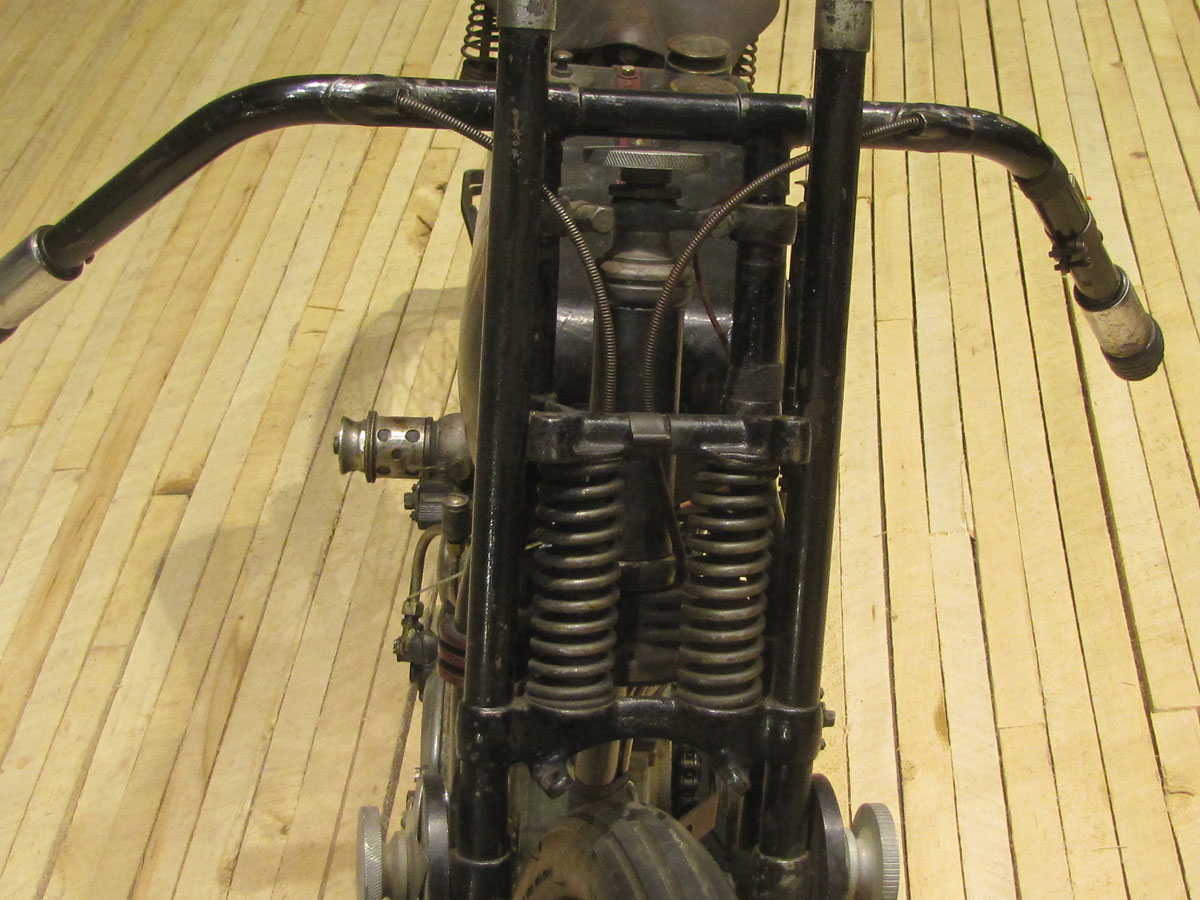
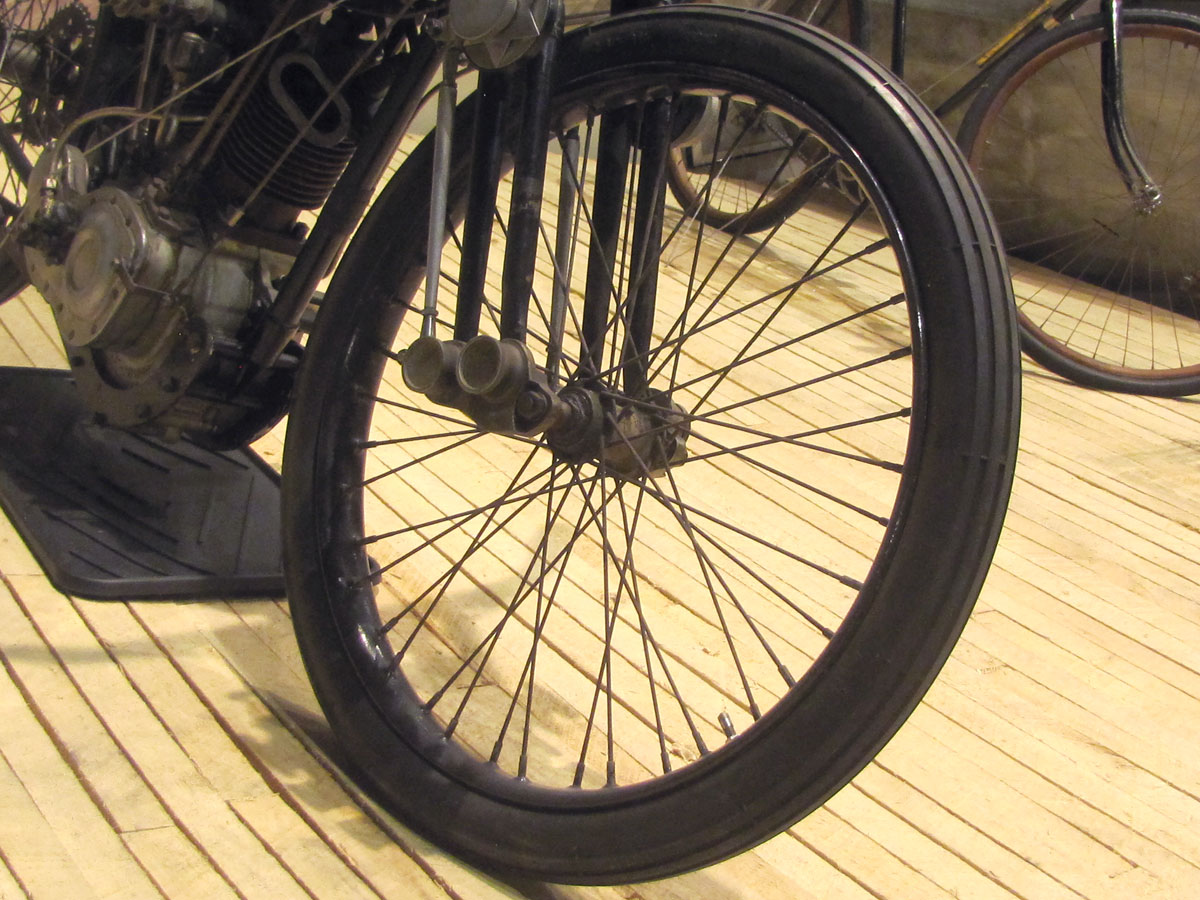
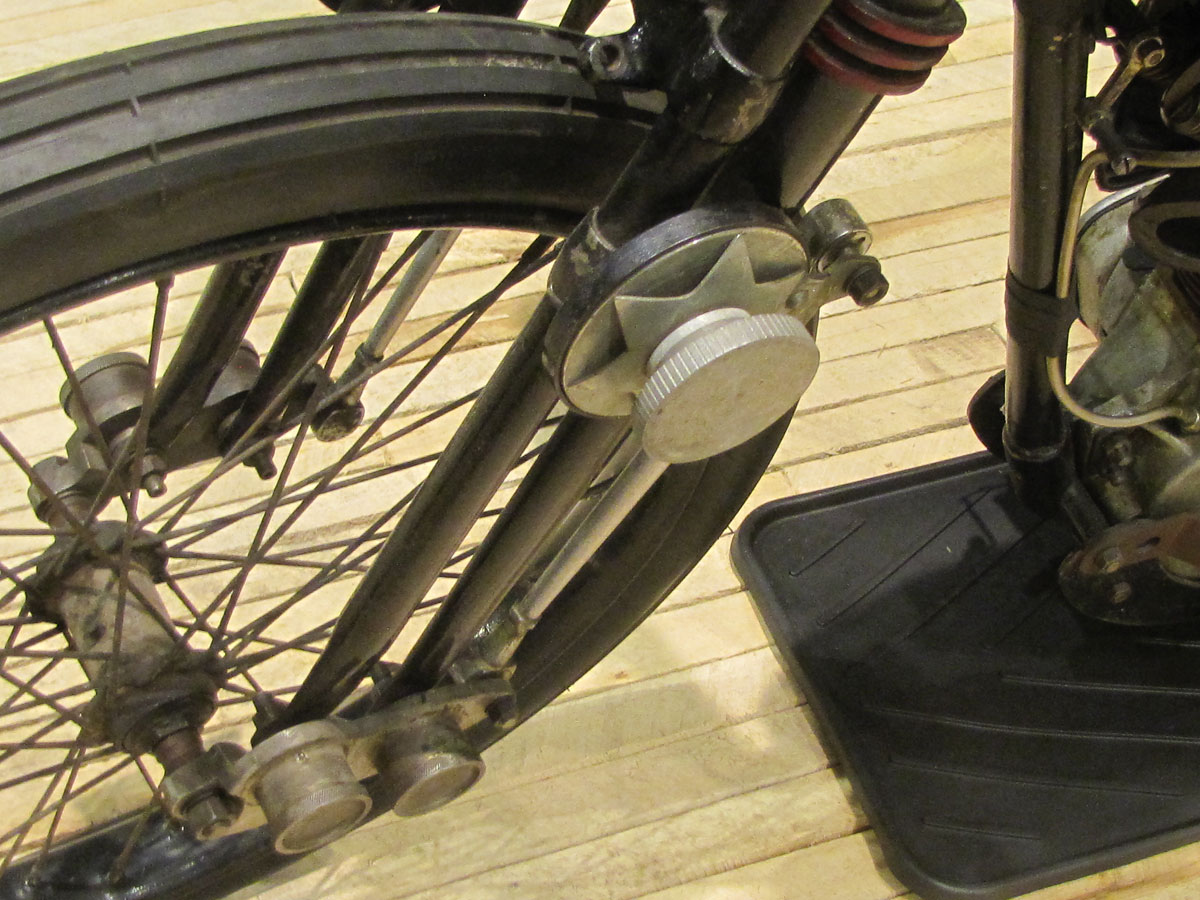
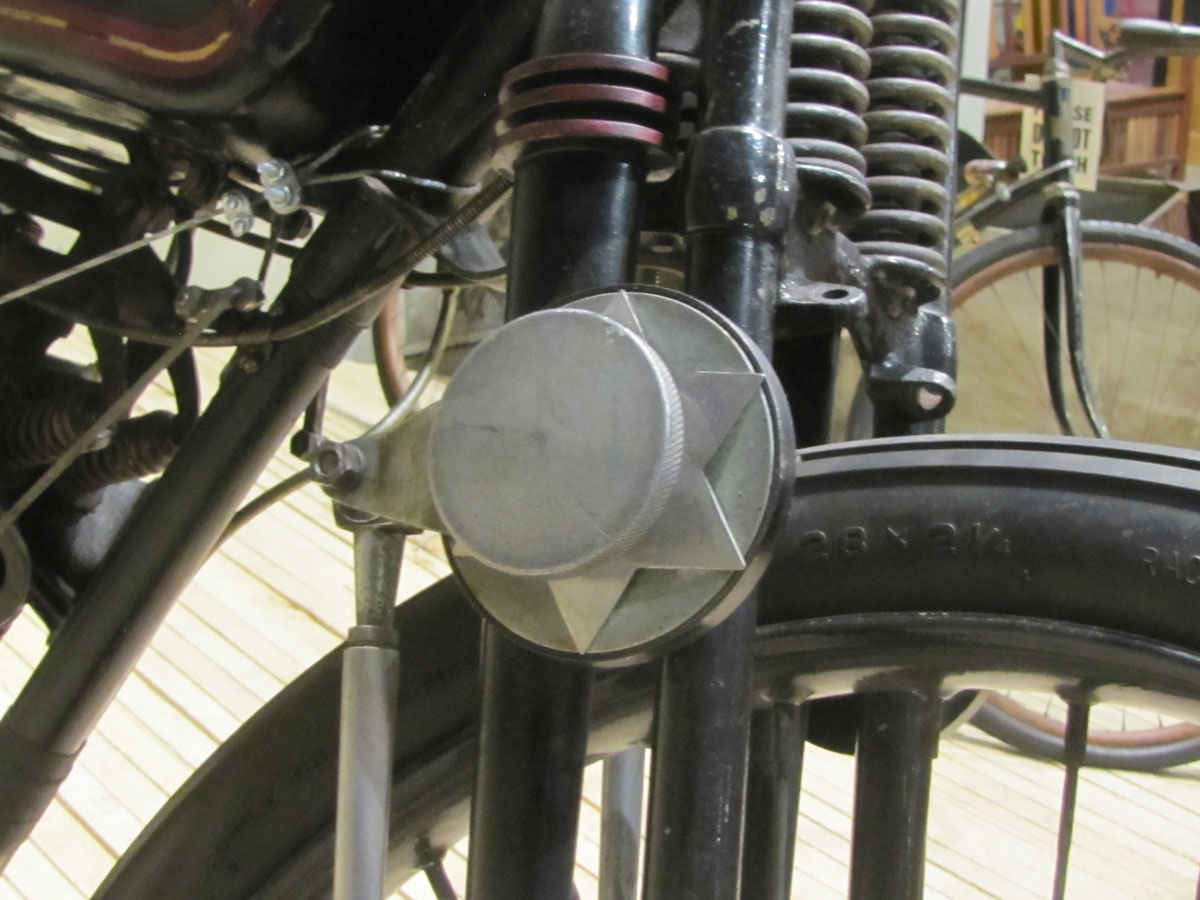
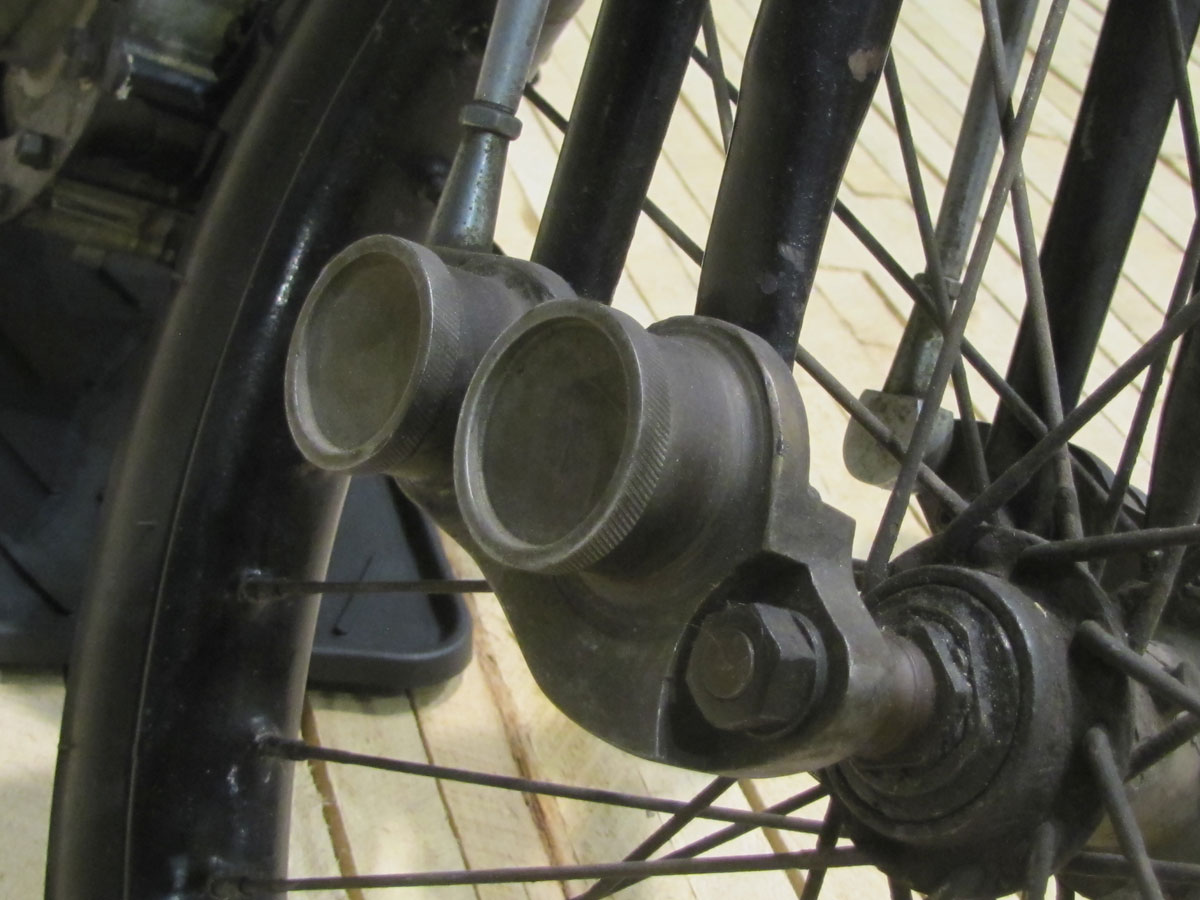
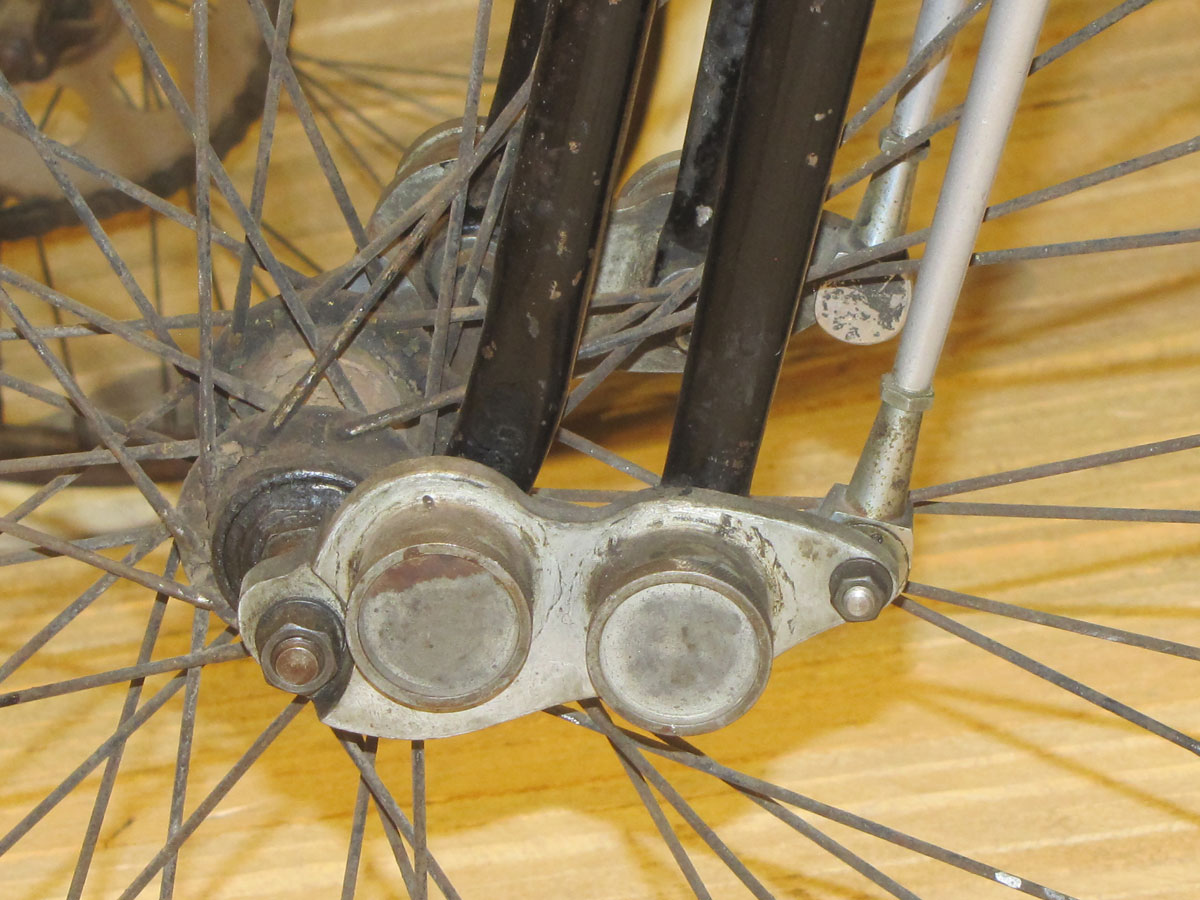
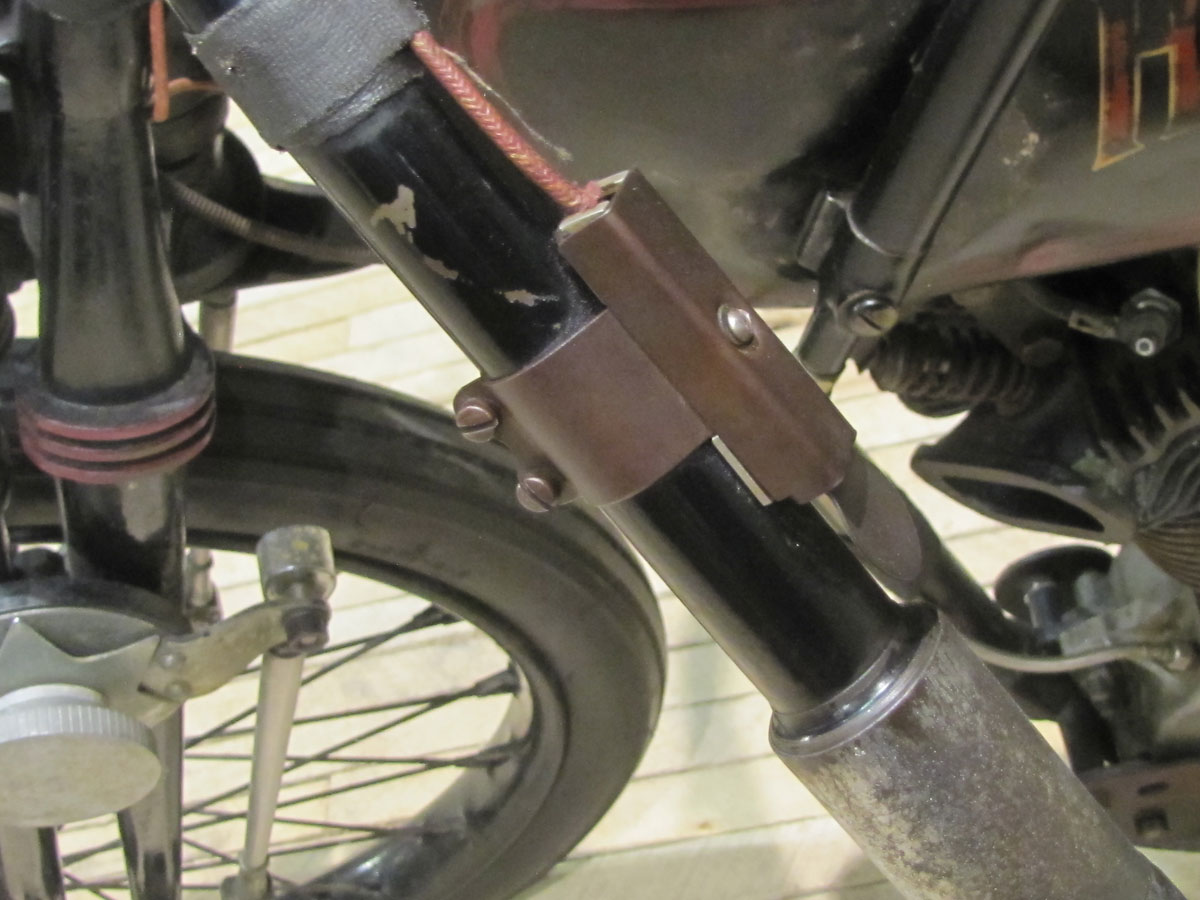
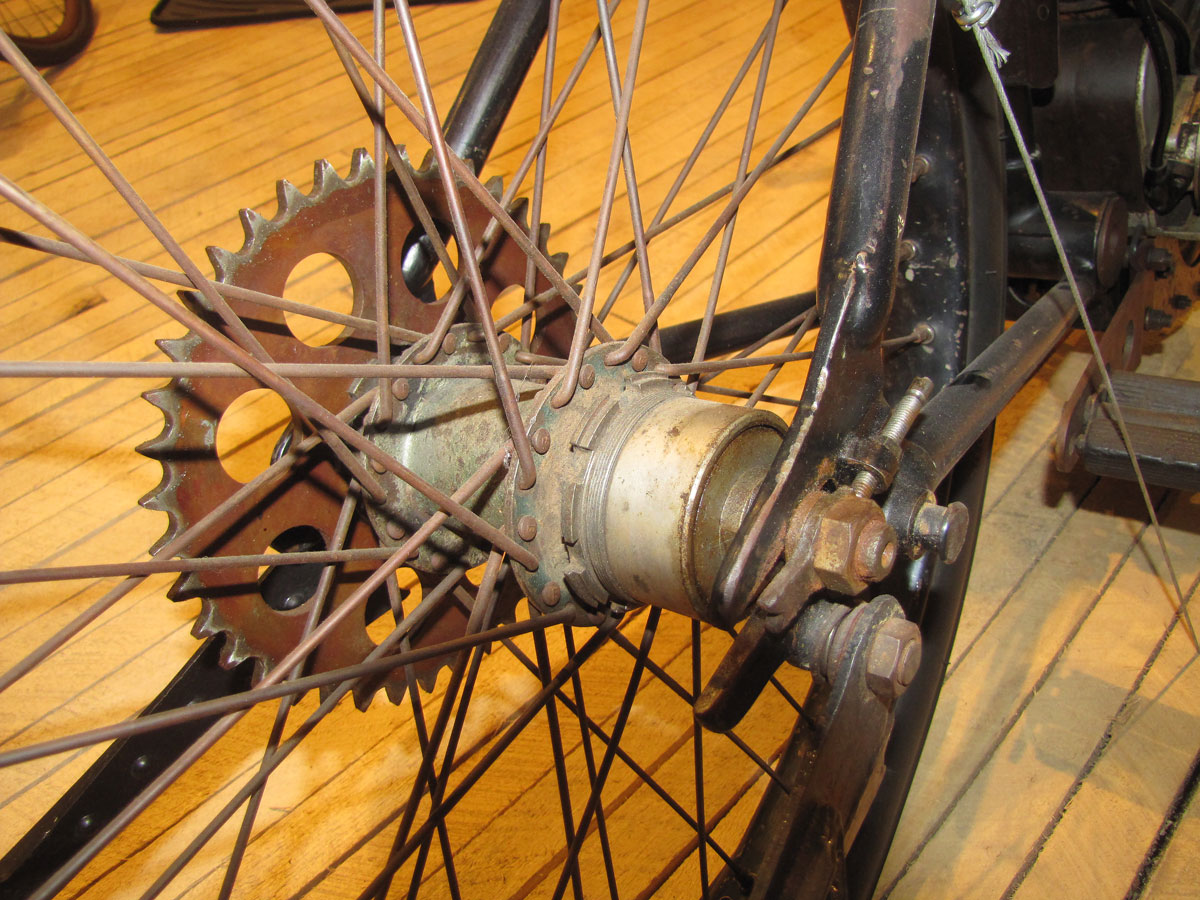

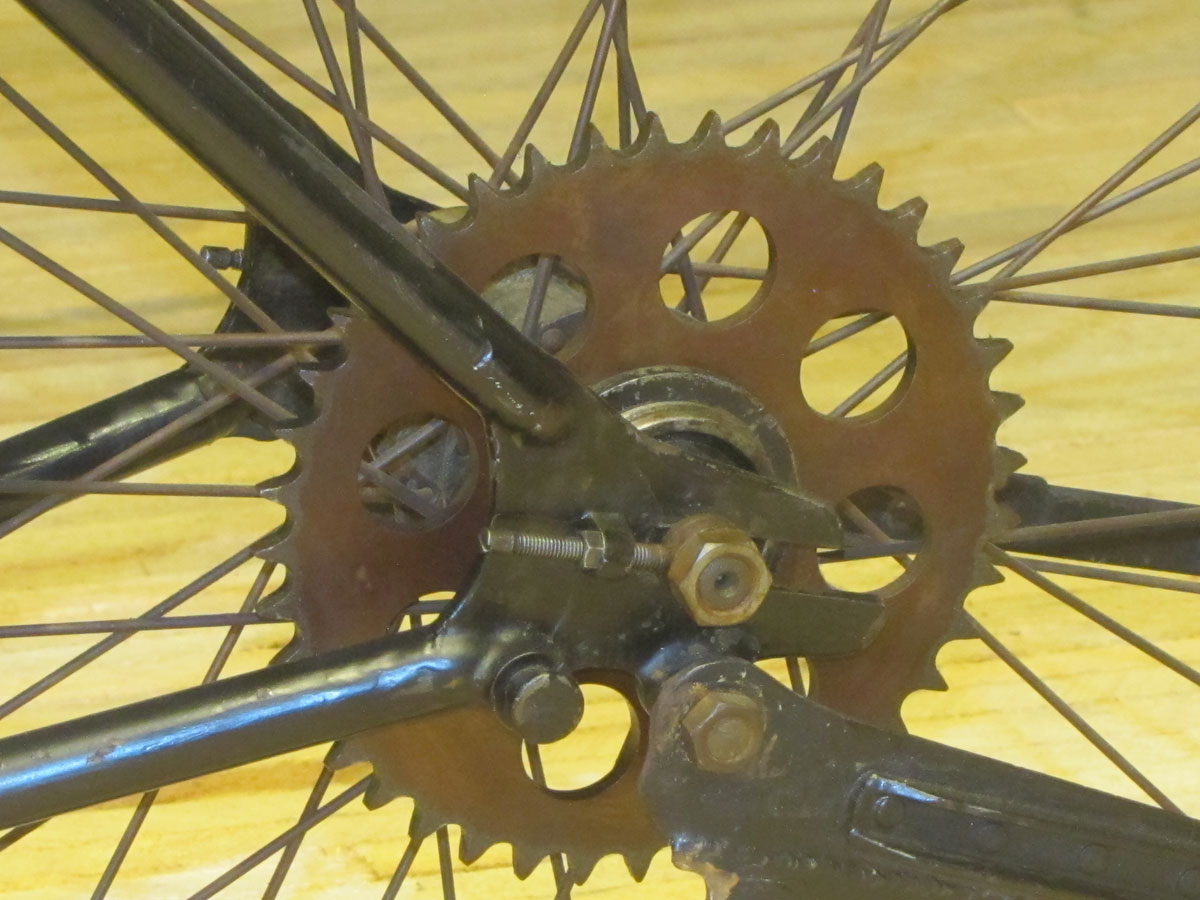
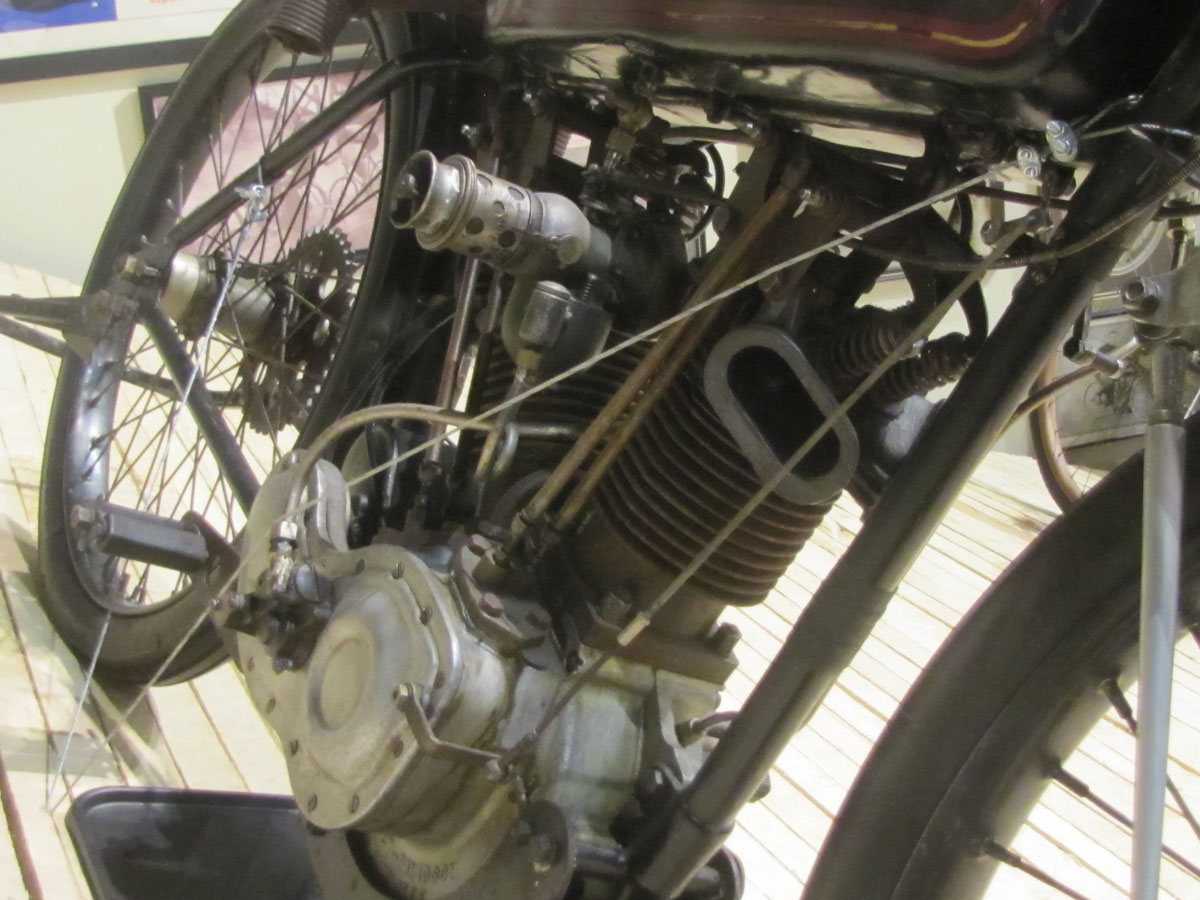
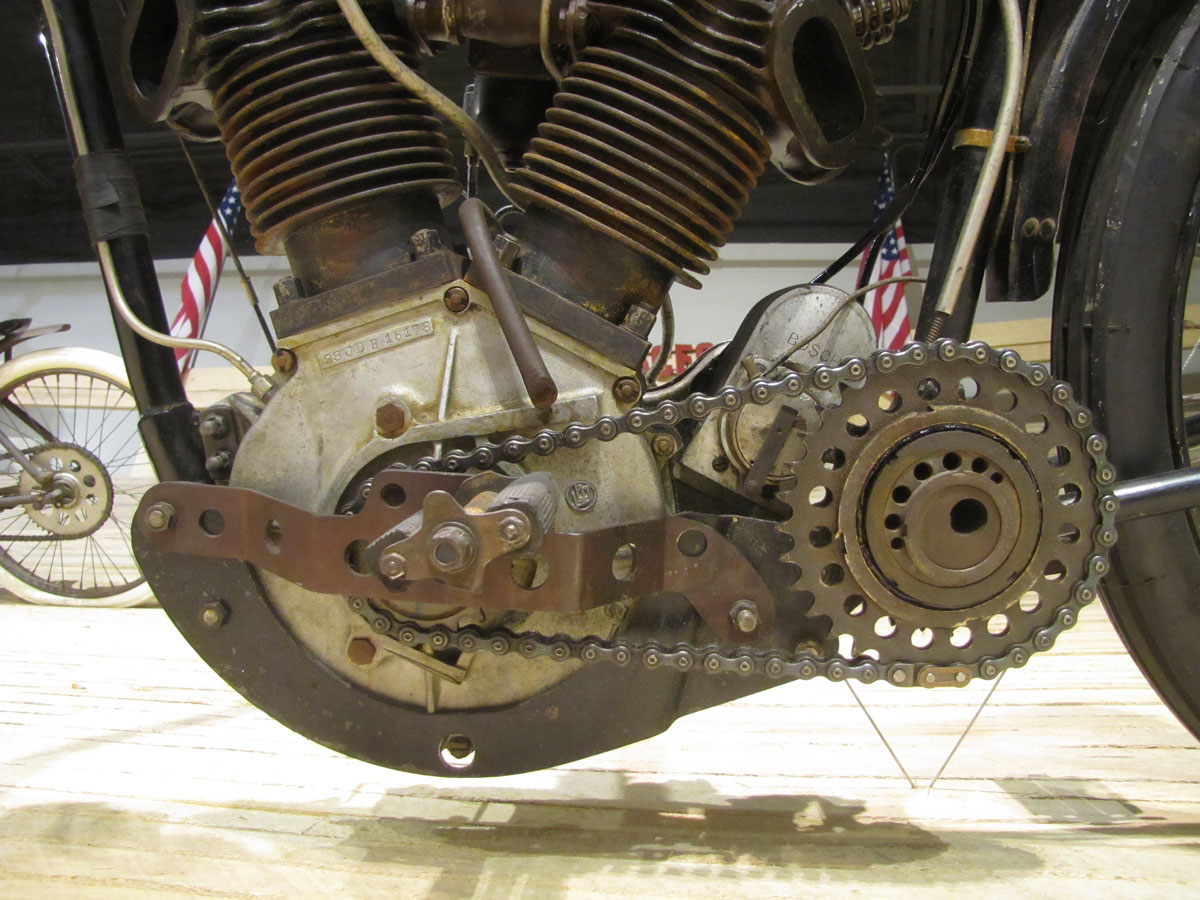
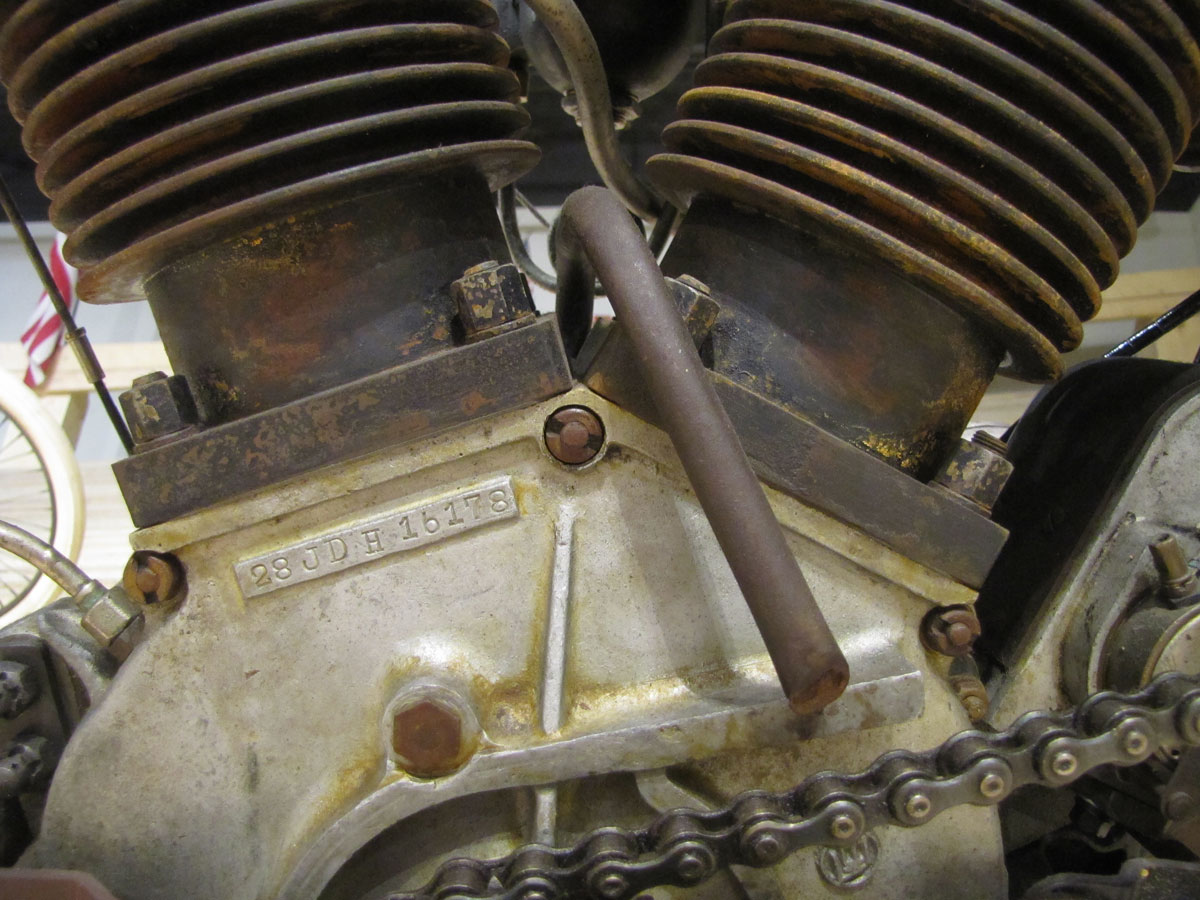
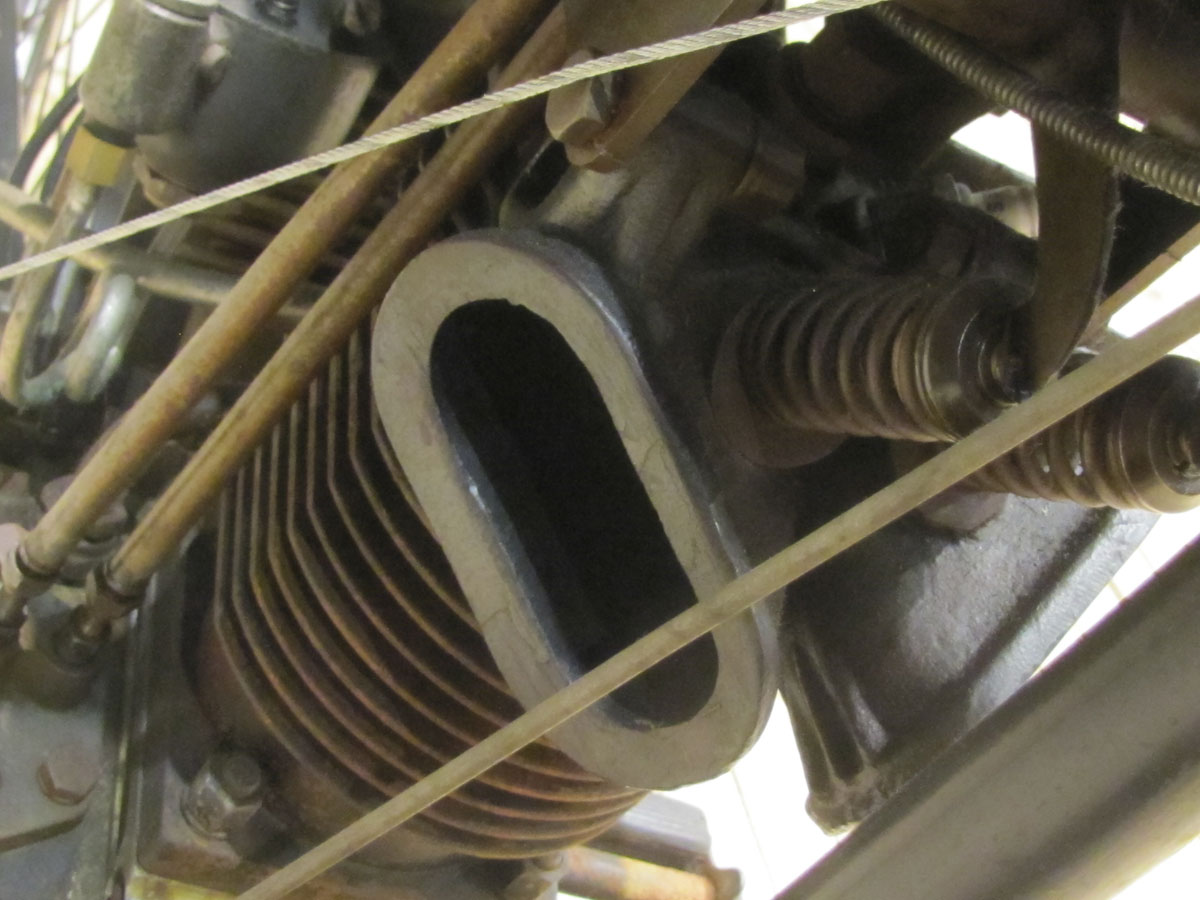
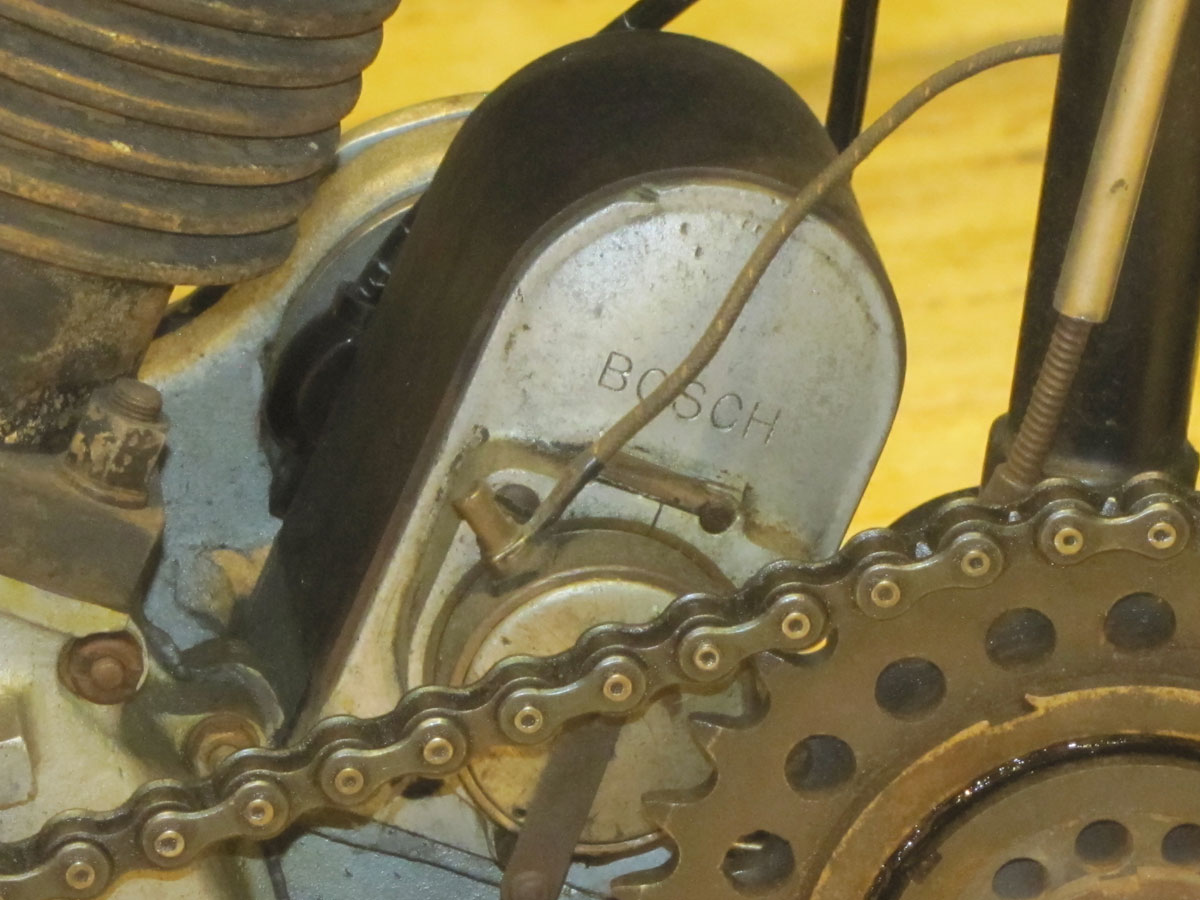
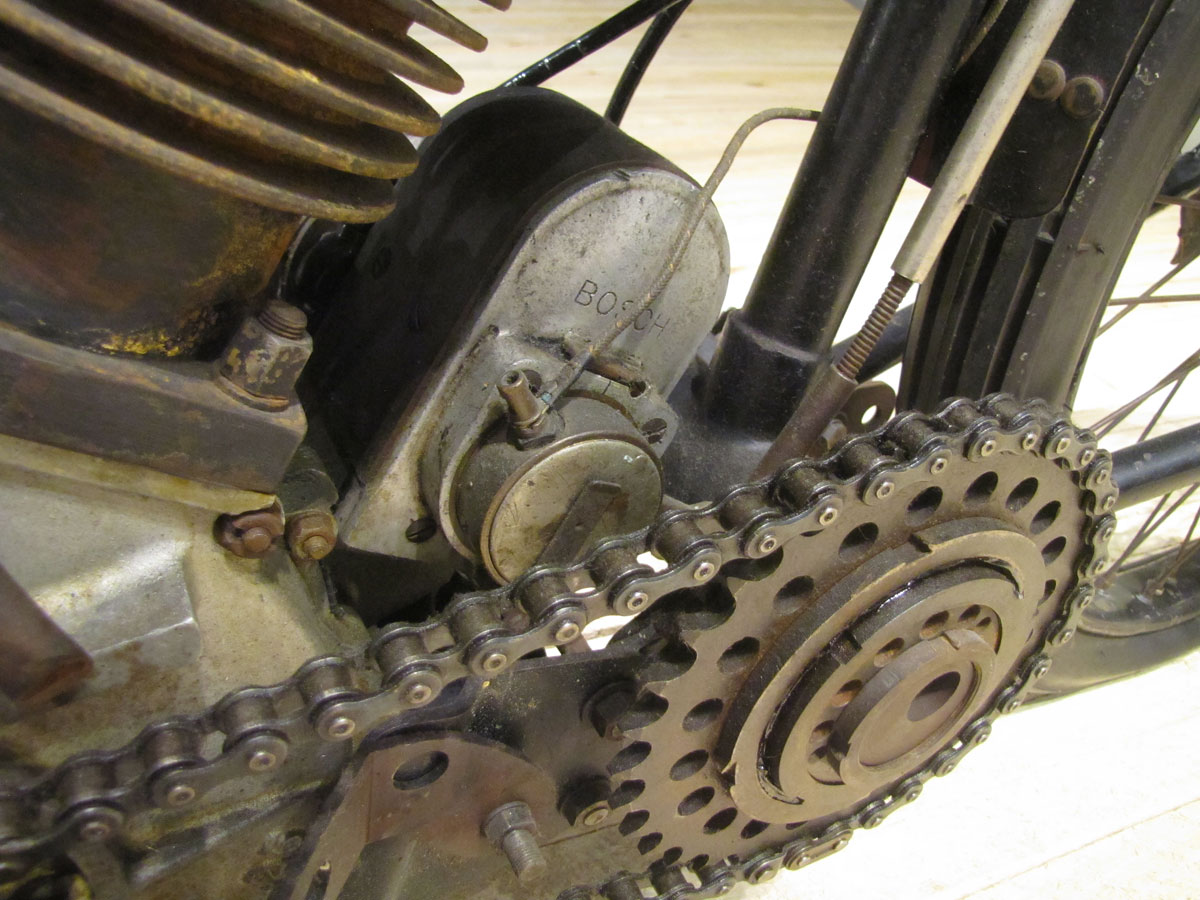
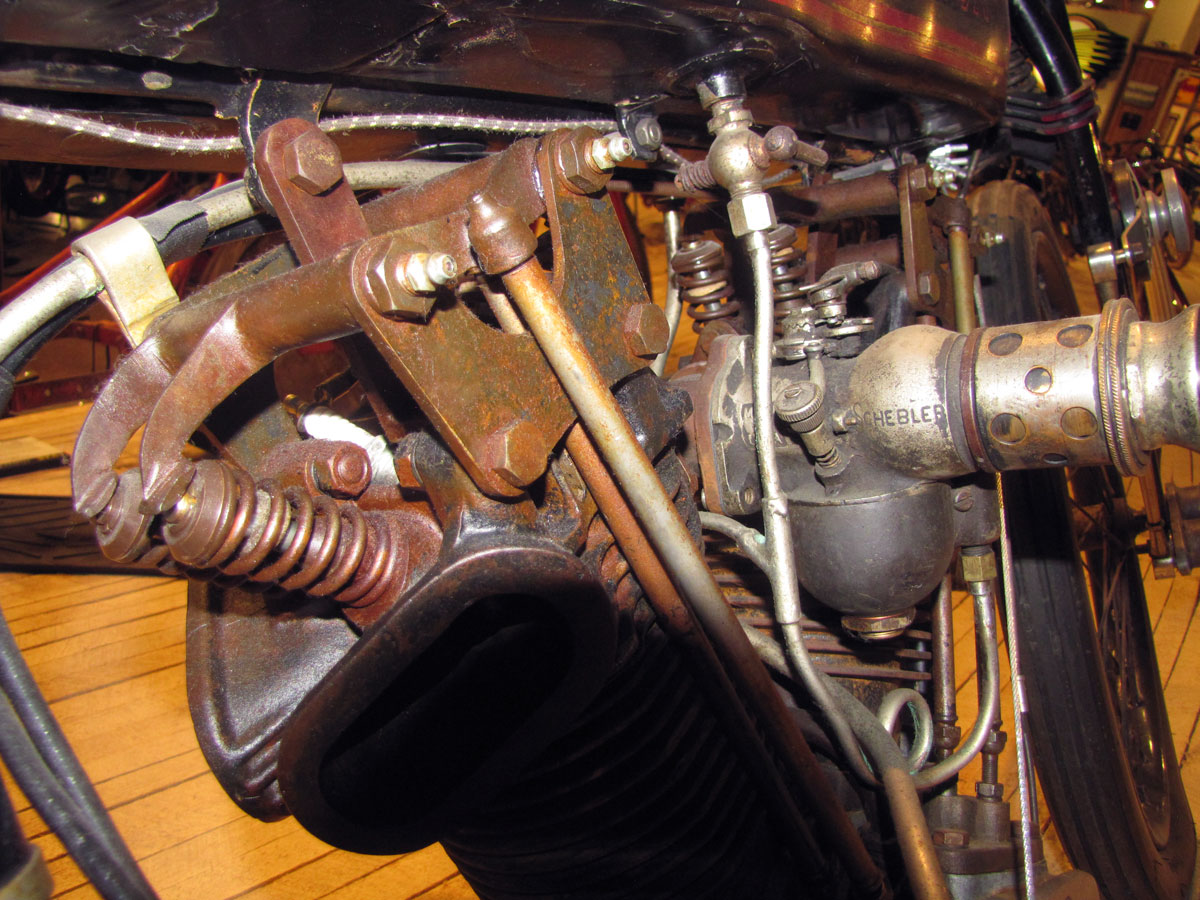
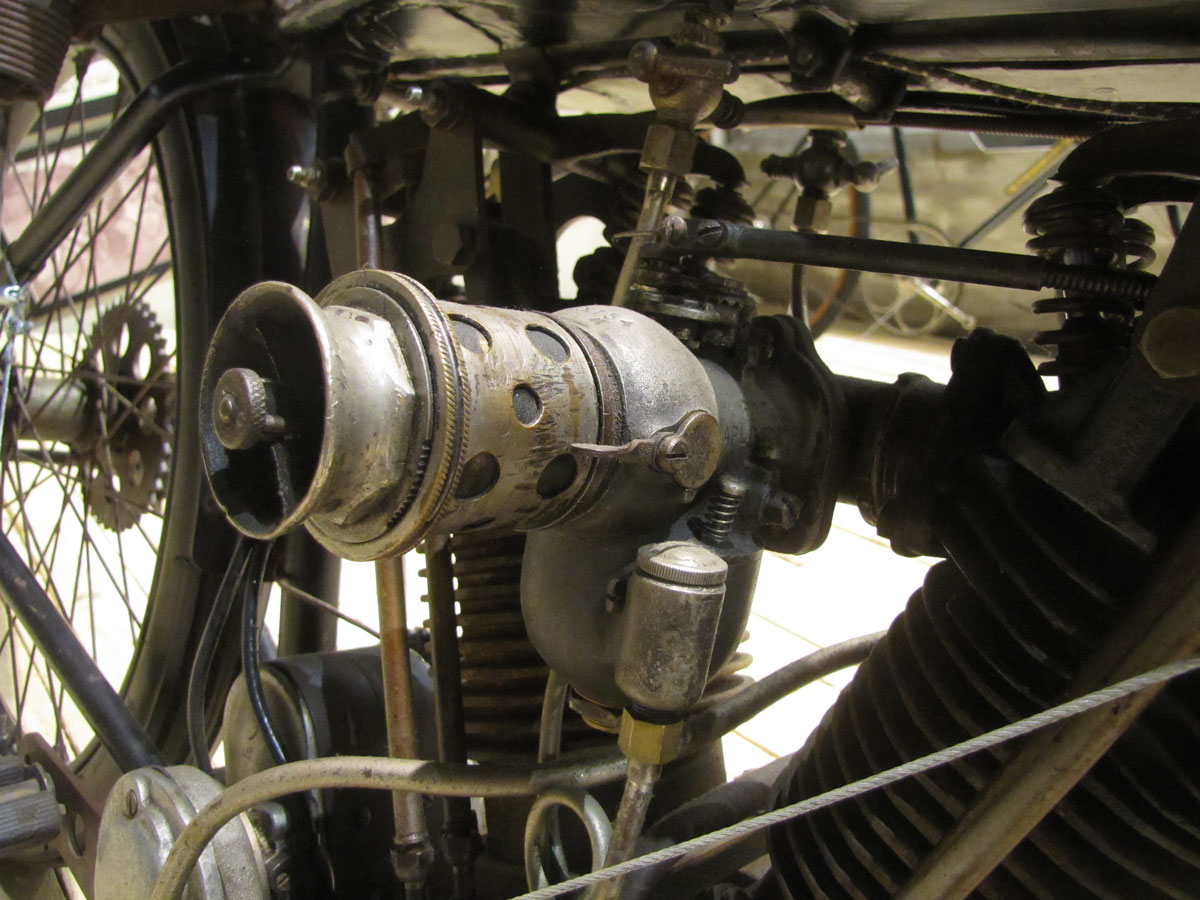
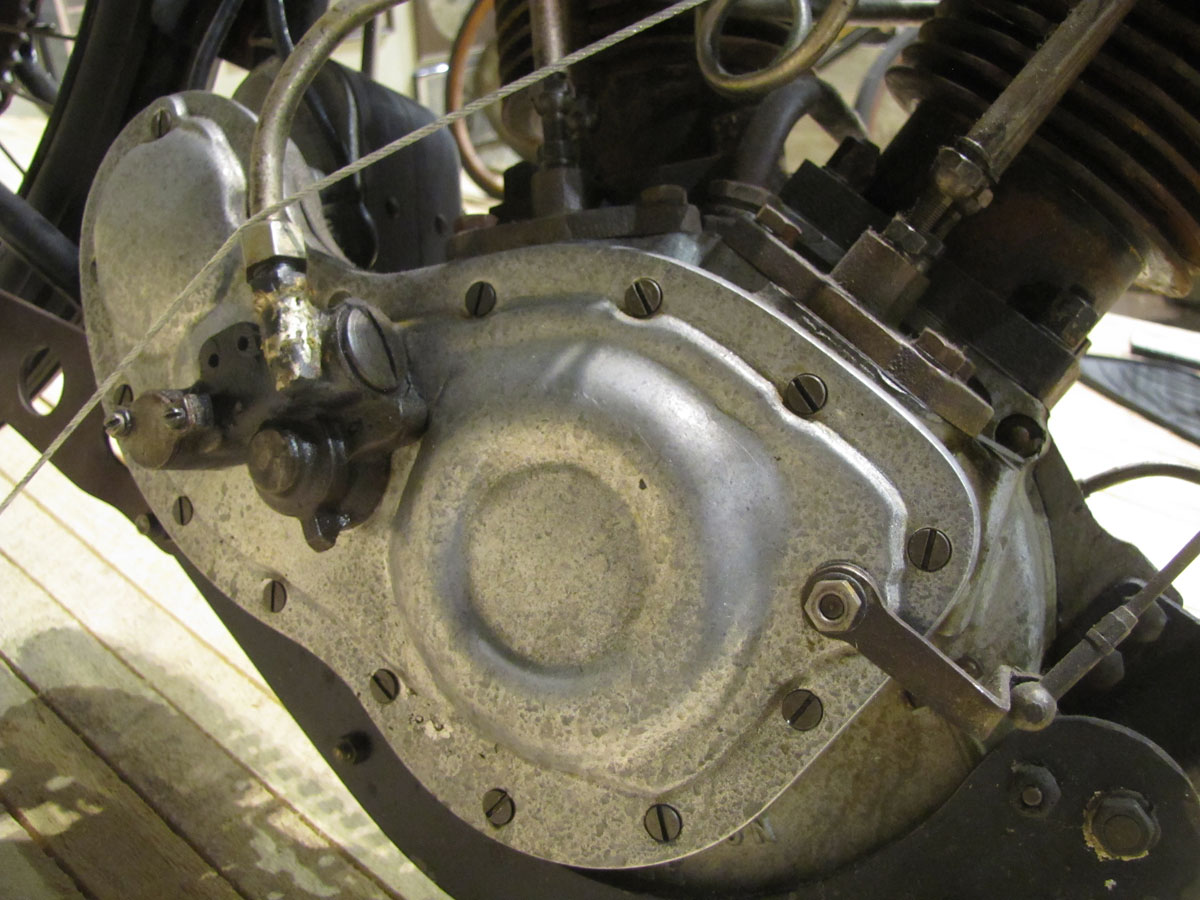


How big are the sprockets
The back primary is 40 teeth and the front primary is 25 teeth